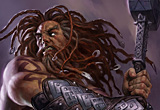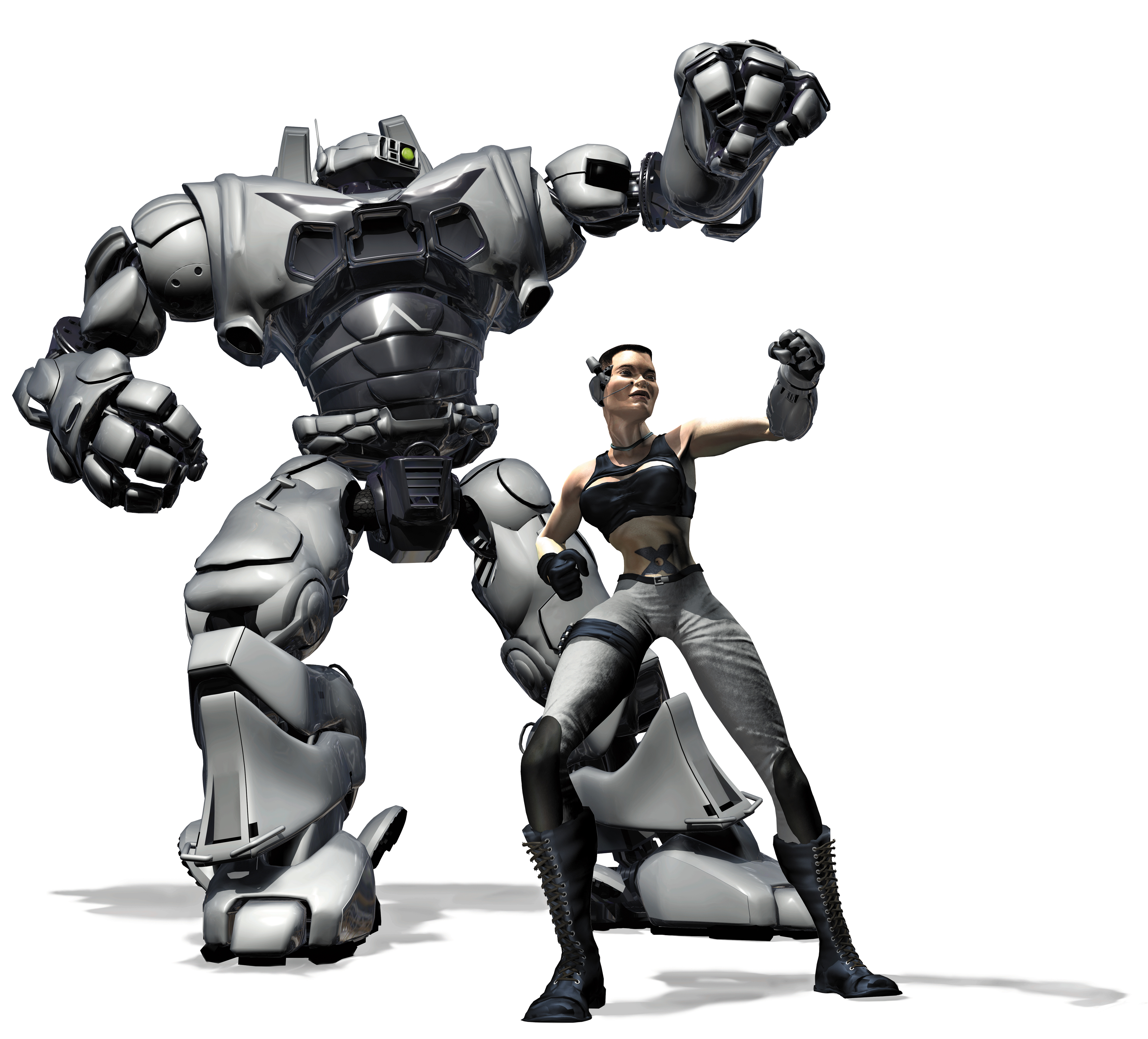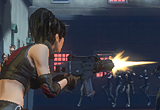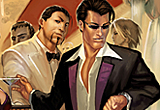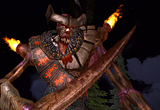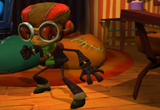Archive for the ‘Portfolio’ Category
The Agency – Showtime
Screenshot Gallery
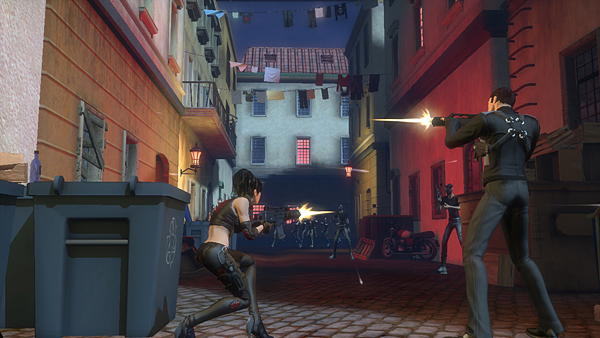
One of my favorite shots, probably because I was still very hands-on at this point in time. Here, Cassie and Gavin are working their way through Bones Alley in Prague’s notorious District 23.
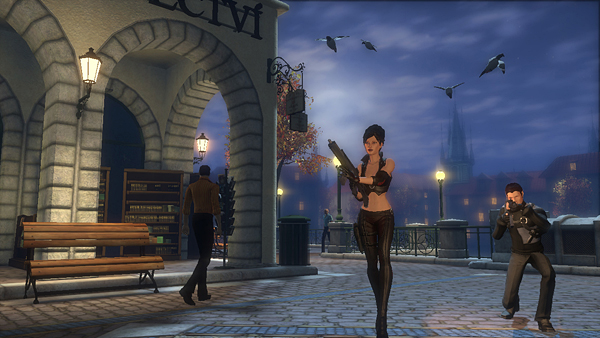
Cassie Nova and Gavin Eissen in Prague, circa 2007
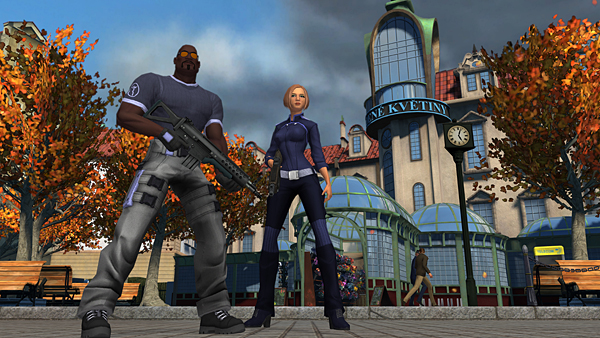
UNITED Flowers, the front for the UNITE Field Office in Prague
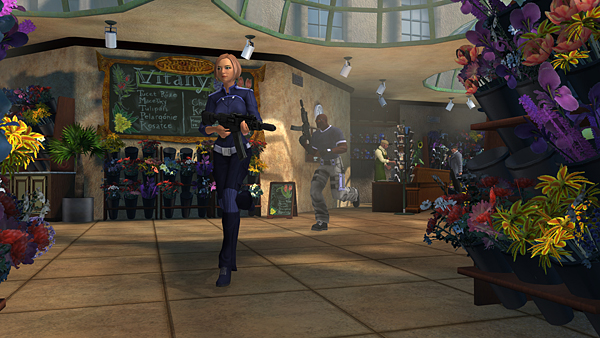
Inside the flowershop heading for a mission
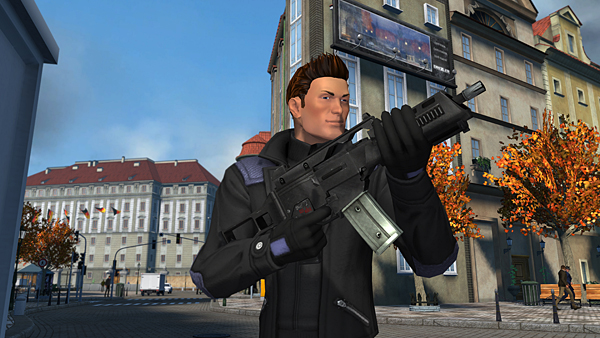
UNITE Agent in Prague
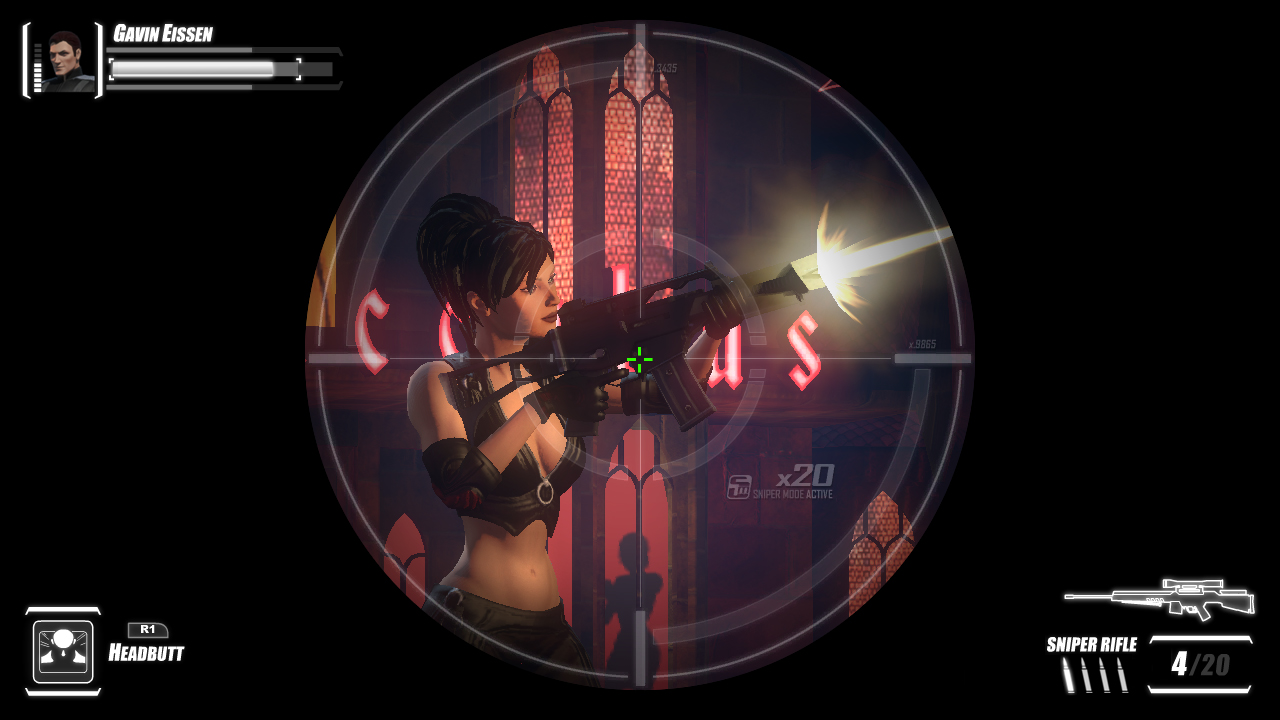
Cassie in the crosshairs outside of Club Succubus
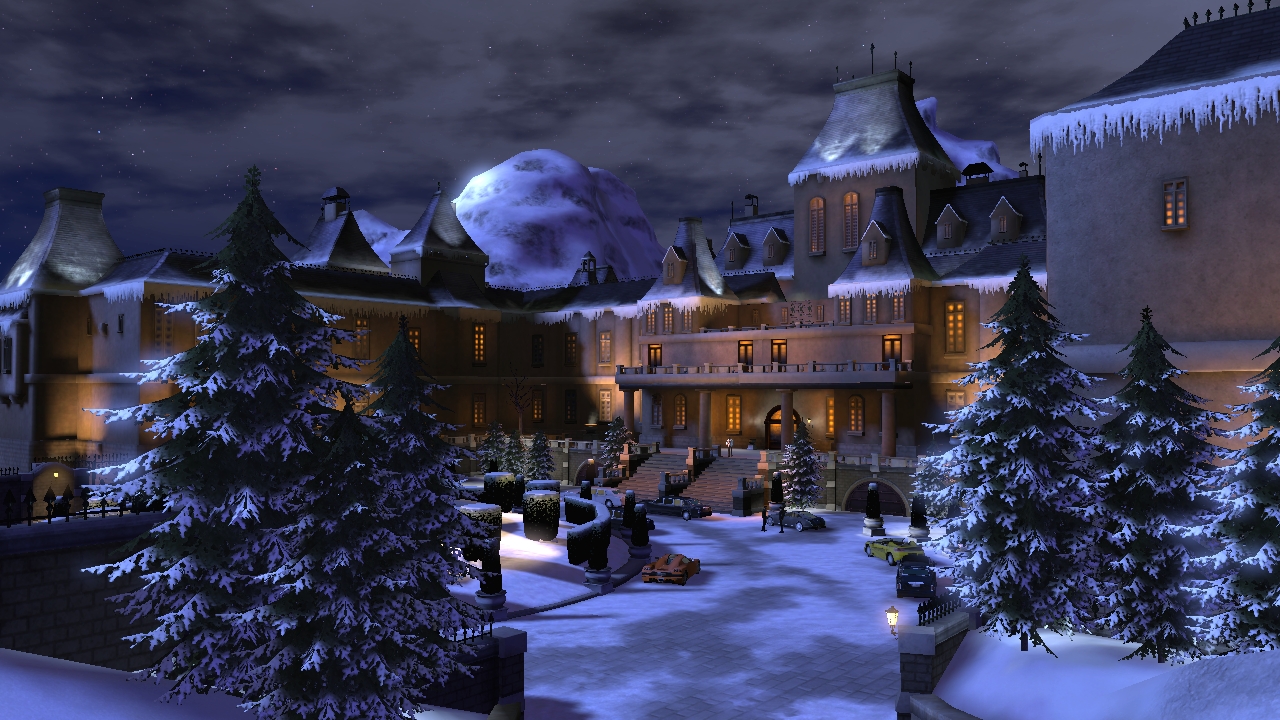
The Bergerbilder Chateau…what sinister plans are unfolding within?
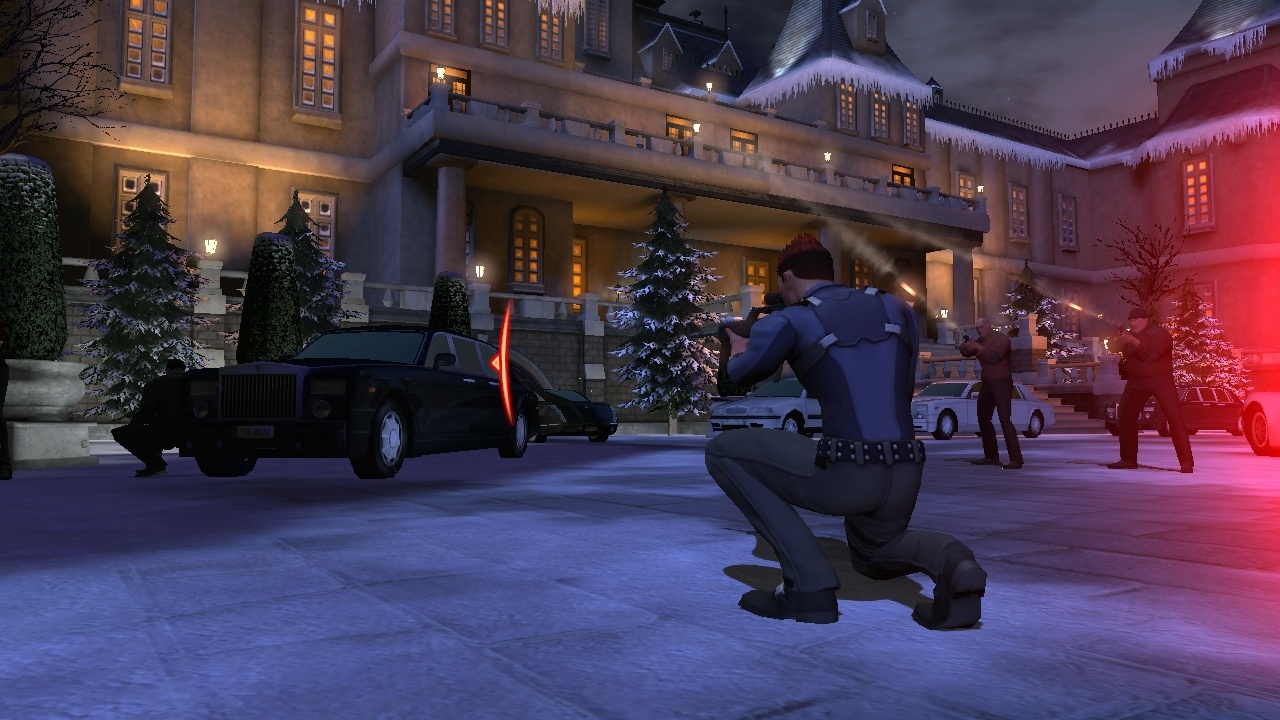
Atypical firefight outside of a billionaire’s mansion
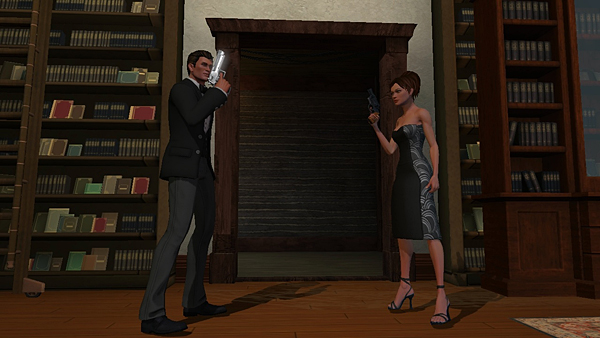
A secret door. Where does it go?!
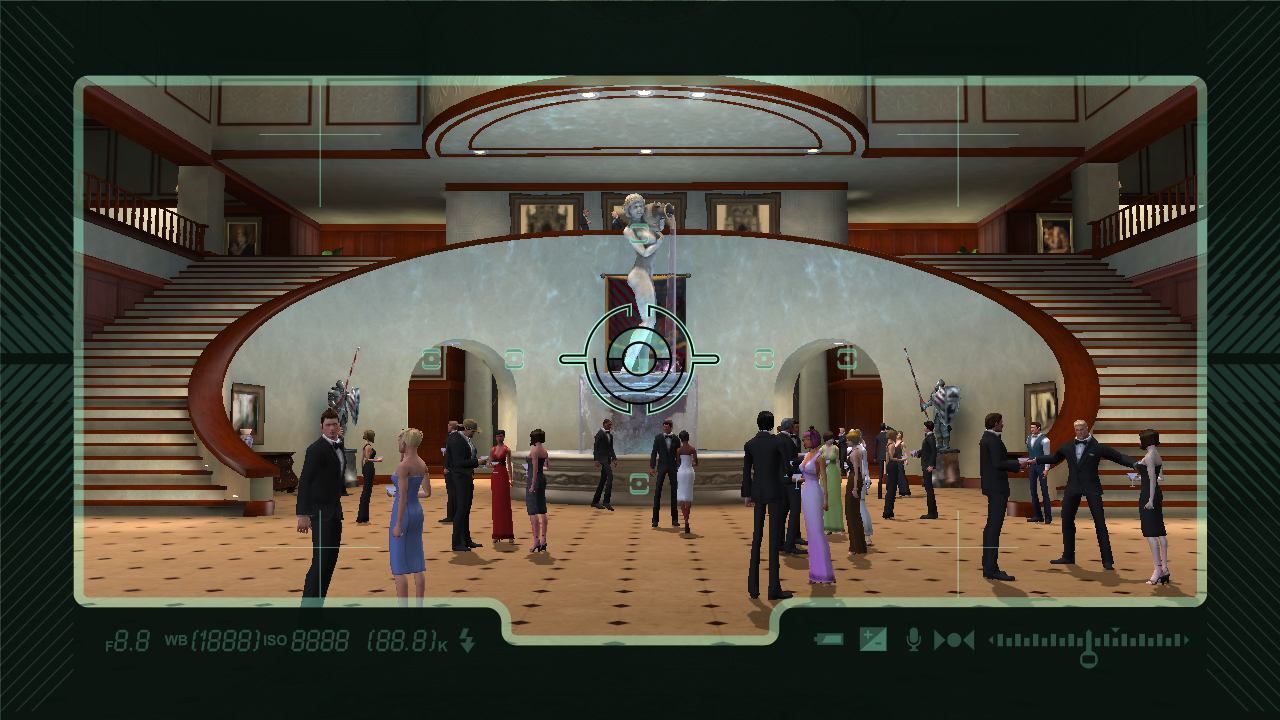
Looking for intel at a black tie event
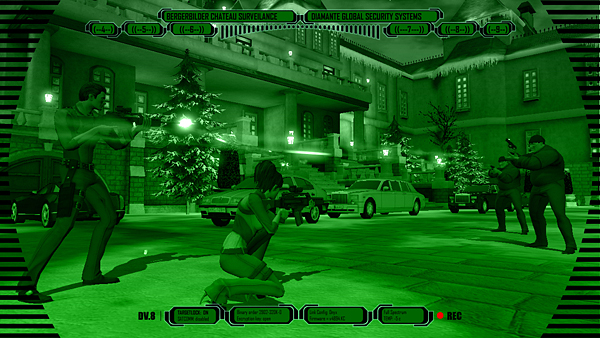
Security camera view taken from the Bergerbilder Chateau in the Swiss Alps
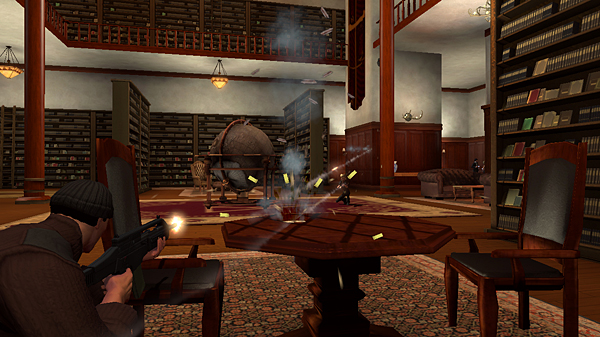
Sit down with an original set of Balzac’s La Comédie humaine or a 9mm assault rifle…your pick.
The Agency – From Pitch to Production
live the life…
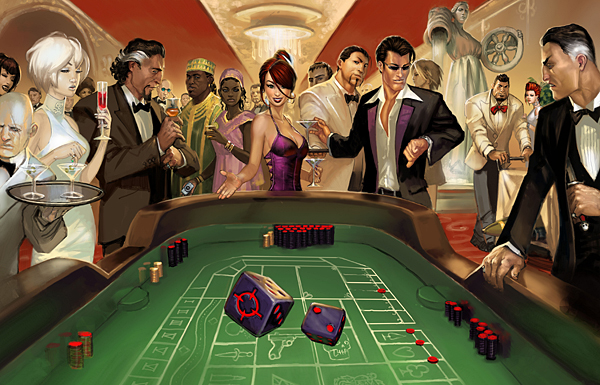
In February of 2005 the freshly opened Seattle branch of Sony Online Entertainment presented me with the opportunity of a lifetime: Bring massively multiplayer gaming to a mainstream audience. We would get to invent our own IP, design our own gameplay, and build on top of an existing game engine of our choosing. How could I say no?
The project started completely from scratch. Hal Milton, the Lead Designer, got us going with a one page write up called “the Agency” and from there we had to define our feature pillars, plan out a small test level, decide on a game engine, and pitch the concept to Sony Pictures so we could get the green light to proceed. This is where terms like “live the life of an elite agent” and “fun now, no waiting” were born.
the pitch
As a life-long fan of James Bond films, the idea of making a game about super spies was exhilarating. And the first order of business, from a visual standpoint, was to distill the most iconic components of the spy lifestyle into thrilling concepts that would drive the future direction of the game. Concepts like exotic locales, jet setting, and lifestyle were essential for framing not just the highlights but the moment to moment experience of the Agency.
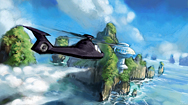 |
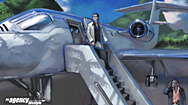 |
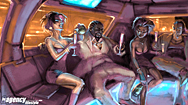 |
| concept: Sam Wood | concept: Sam Wood | concept: Sam Wood |
|---|
Hal coined the term Bruckheimer to best encapsulate how an over-the-top climax should conclude most, if not every, mission. Our initial 5 minute mission included an infiltration, discovery, a fire fight, the death of a comrade, and a spectacular Bruckheimer to cap it all off! Below are three key action moments from the animatic we used to guide our very first prototype in Unreal 3.
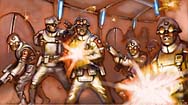 |
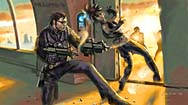 |
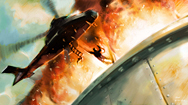 |
| concept: Sam Wood | concept: Sam Wood | concept: Sam Wood |
|---|
Characterful Characters…
With Unreal in hand our tiny team of twelve spent the next 4 months fleshing out two game play prototypes. It was during this time that the two player factions (UNITE and ParaGON) began to evolve and notions of public space and private instances came into focus. But the purpose of the initial gameplay prototypes was to prove just that: gameplay. We needed a milestone (6 weeks at the time) to just focus on character and establish a quality bar for production values. And, thus, Duncan was born.
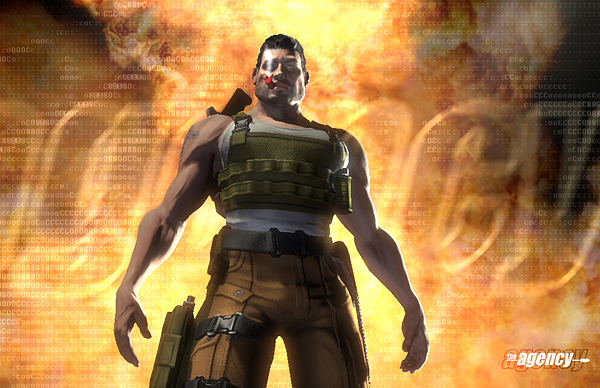
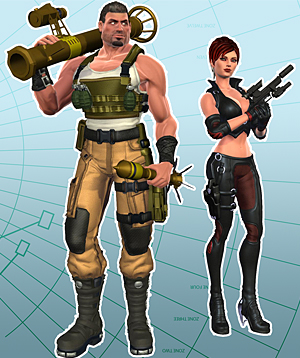
Refining the Direction
With Duncan and Cassie as iconic spokesmodels and solid design principals established in playable prototypes, I was free to attack the remaining visual design challenges. We’d learned a lot from our quick prototypes and knew that our initial budget estimates would have to be scaled back. Because the Agency is an Action MMO with real shooter gameplay, frame rate was absolutely critical. And because players can experience the game from two perspectives, either the upscale sophisticated super spies of UNITE or the hardcore rough and tumble mercenaries of ParaGON, we needed to be very clever about designing within constraints so that players could still have the freedom of expression they are accustomed to in MMOs. This meant embracing our technical limitations and driving forward with a style that emphasized shape and color, but downplayed high frequency details. Drawing inspiration from vintage Bond posters, Danger Girl comics, and Pixar’s the Incredibles we ended up in a place where style and modern graphics capabilities intersect.
ACTION, adventure, intrigue…now in 2 flavors!
One of the things that makes the Agency really incredible is the ability to pursue a career from two different perspectives. This meant exploring each game pillar twice. Early in the process I worked with Sam Wood to visually define what it would look like to play as a team, walk into a party, get into combat, and sneak around. The results are below…
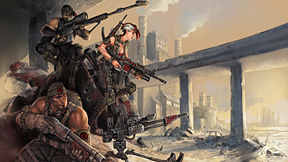 |
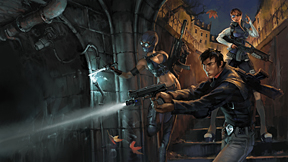 |
| concept: Sam Wood | concept: Sam Wood |
|---|---|
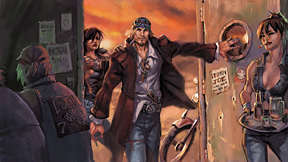 |
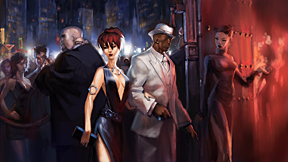 |
| concept: Sam Wood | concept: Sam Wood |
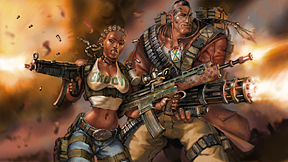 |
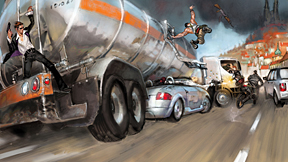 |
| concept: Sam Wood | concept: Sam Wood |
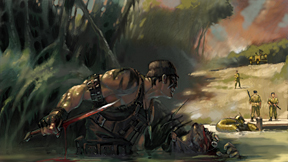 |
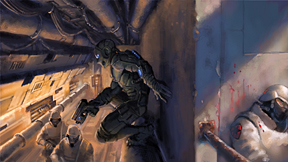 |
| concept: Sam Wood | concept: Sam Wood |
Action Moments, The Life of an Elite Agent Continues…
With those perspectives defined I thought it important to illustrate a handful of experiences we wanted to make sure players would have in our game. From the beginning we knew we needed an exciting chase scene and the beauty of concept art is you are unconstrained by technical limitations…so we set the bar high. A boat chase down a canal in Prague and a daring zip-line escape satisfied our the over-the-top quotient nicely. After that I wanted something a little more sedate…something to demonstrate the intrigue side of the Agency. So we came up with a black market purchase of biological weapons material, and a seductive infiltration to secure data and schematics for a prototype laser.
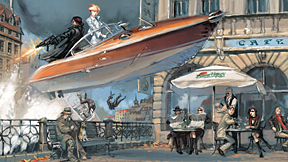 |
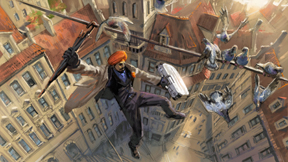 |
| concept: Sam Wood | concept: Sam Wood |
|---|---|
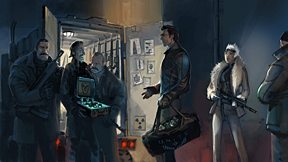 |
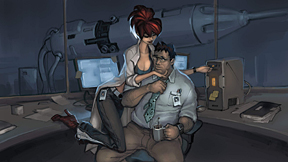 |
| concept: Sam Wood | concept: Sam Wood |
exotic locales
Bond films often feature the hero jet-setting to various exotic locations. We selected our destinations based on the most interesting sounding places that still had familiar sounding names and shared enough architecture that we could flesh out the world with a reasonable investment of resources. Sexy and intriguing nightlife, old-world Europe and Central America, and picturesque settings define the settings for the Agency.
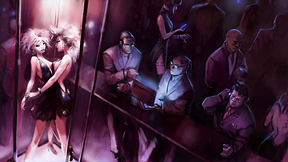 |
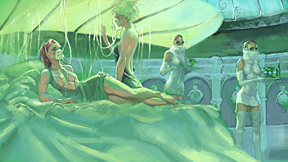 |
| concept: Sam Wood | concept: Sam Wood |
|---|---|
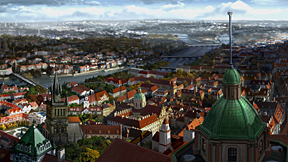 |
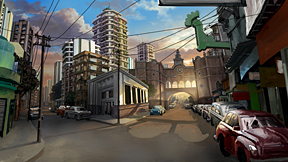 |
| concept: Eddie Smith | concept: Eddie Smith |
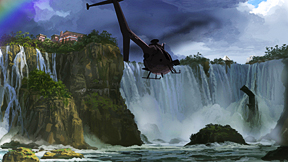 |
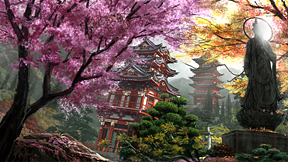 |
| concept: Eddie Smith | concept: Eddie Smith |
VILLAINS
Oh boy. Now we’re getting to my favorite part. I LOVE working on Villains! Especially when I get to work with talented artists like Sam Wood and Patrick Shettlesworth and awesome designers and writers like Hal Milton and Matt Staroscik. The designers would come up with a plot line and character backgrounds and I’d look for iconic visual hooks to make the faction stand out. I got to write a fair amount, adding personality to (or outright inventing some of) the characters to help visually define a faction. Occasionally, I was even inspired to elevate what was a minor faction into a more dominant role because the visual hooks were so strong. I’d always work with design to make sure that was OK and, in the end, we were extremely pleased with our food-chain of villainy.
I created a taxonomy for villainy which gave the concept artists guidelines for what the Boss, Henchmen, Lieutenants, and Goons should look like, with special considerations for bringing attention to roles (such as combat, stealth, or support oriented bad guys). Each faction also received a unique logo and color palette. That way the look of each faction was totally unique and the production team had good guidance moving forward. I also directed an effort build as much faction clothing as possible from existing clothing components (e.g. combat fatigues, dress slacks, boots, etc), using texture and palette shifts to make the clothing items appear unique and consistent within each faction.
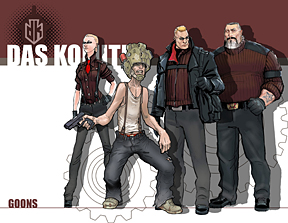 |
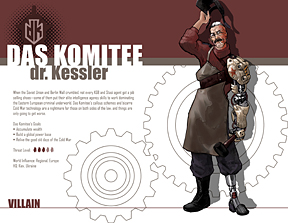 |
| concept: Sam Wood | concept: Sam Wood |
|---|---|
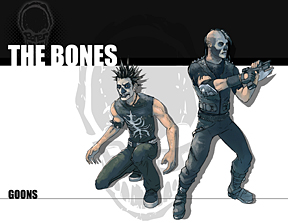 |
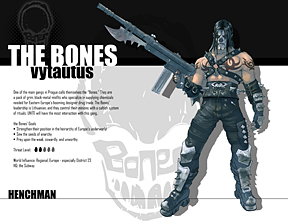 |
| concept: Patrick Shettlesworth | concept: Patrick Shettlesworth |
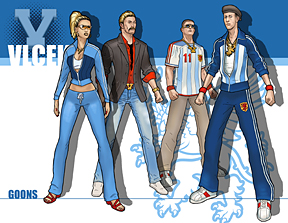 |
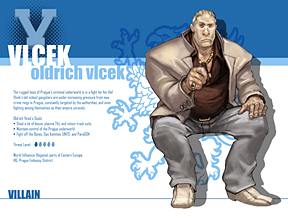 |
| concept: Sam Wood | concept: Sam Wood |
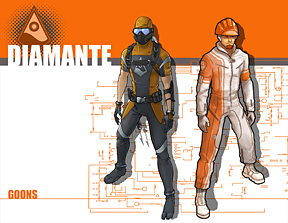 |
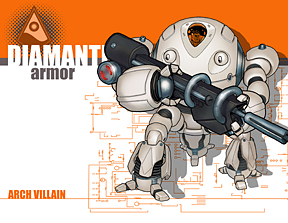 |
| concept: Pat & Sam | concept: Sam Wood |
WEAPONS
At the core of every shooter lies an arsenal of powerful weapons. We designed over 70 weapons for the game, with six unique company profiles and lines of industrial design to match. Over time, players will learn to recognize the difference between Fang PacifiCo and Rampart Arms.
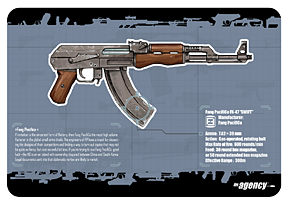 |
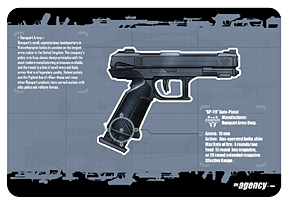 |
| concept: Sam Wood | concept: Sam Wood |
|---|---|
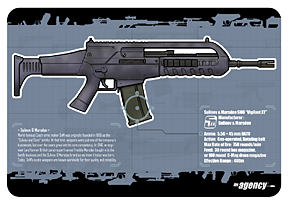 |
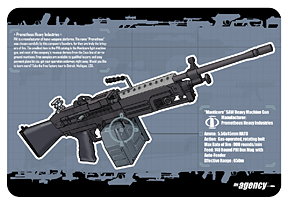 |
| concept: Sam Wood | concept: Sam Wood |
OPERATIVES
James Bond has Money Penny and Q, Jack Bauer has Chloe…every super agent has a network of operatives to help him or her get through a mission. The Agency has plans for nearly 500 operatives, each one with a slightly unique personality and set of attributes. And each one is represented in-game by a collectible trading card. I worked very closely with Hal and the operatives designers to define the structure for the cards and designed the template for the card face and iconography. I also worked with the concept artists, personally providing over 40 written bios with art direction notes, to really bring to life this important portion of the game.
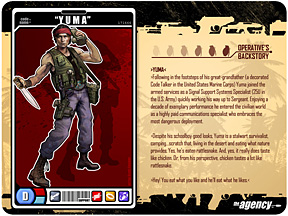 |
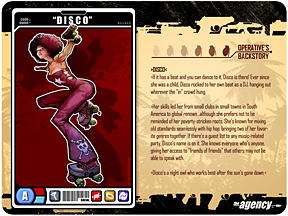 |
| concept: Scott Fischer | concept: Scott Fischer |
|---|---|
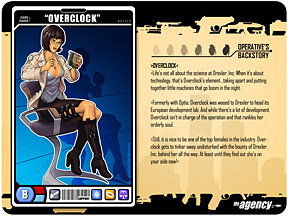 |
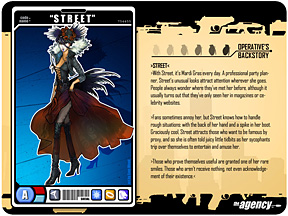 |
| concept: Patrick Shettlesworth | concept: Sam Wood |
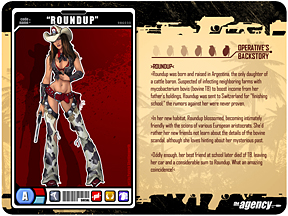 |
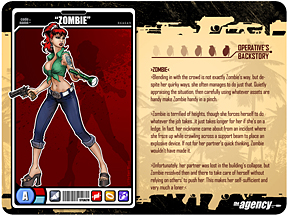 |
| concept: Patrick Shettlesworth | concept: Sam Wood |
Mythica – the Product
A Warriors Dreams
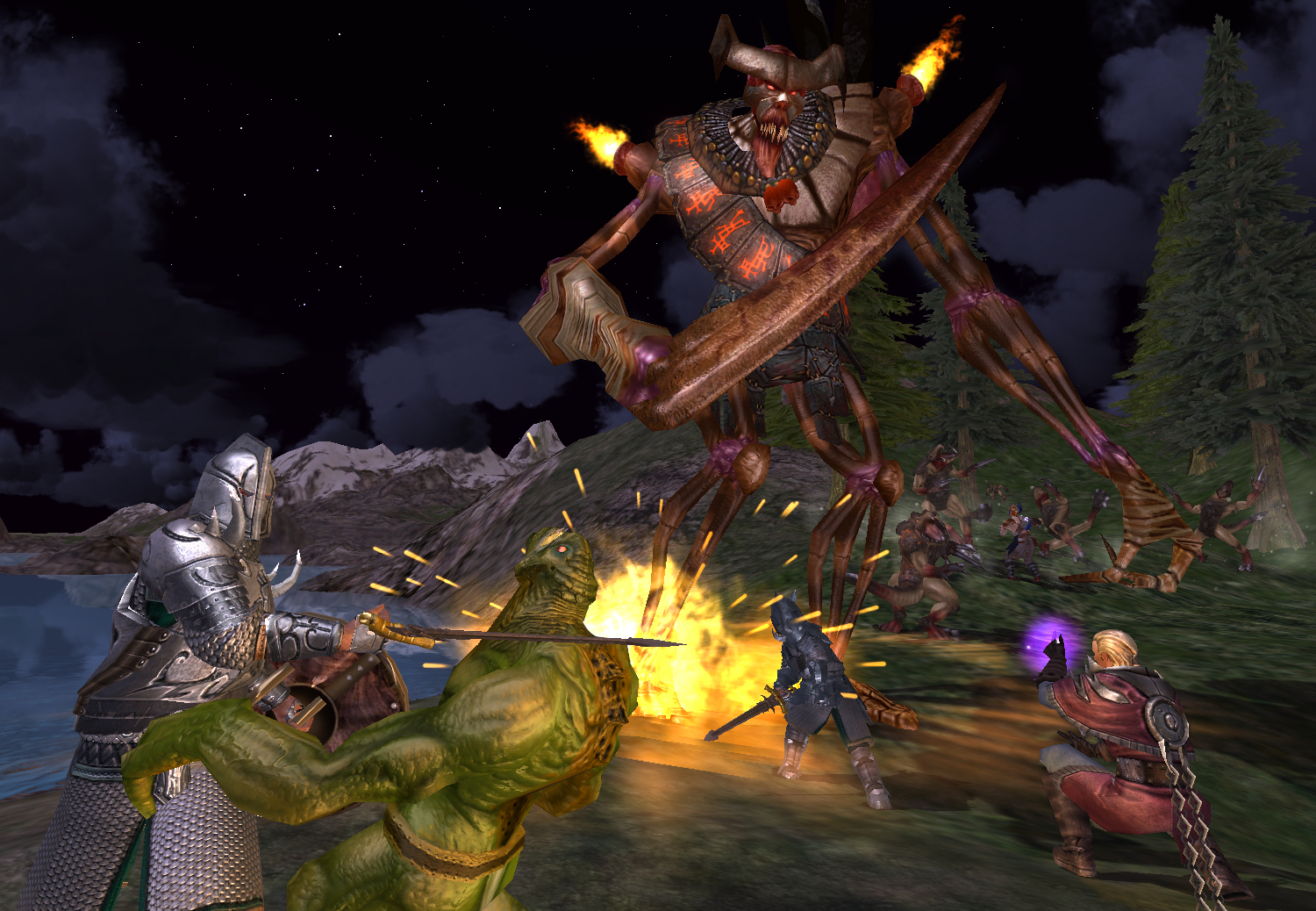
Group combat in Mythica, circa 2003.
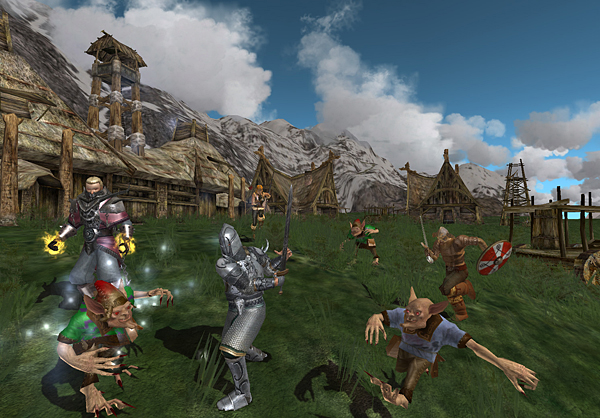
Midgard outpost besieged by Hulderfolke
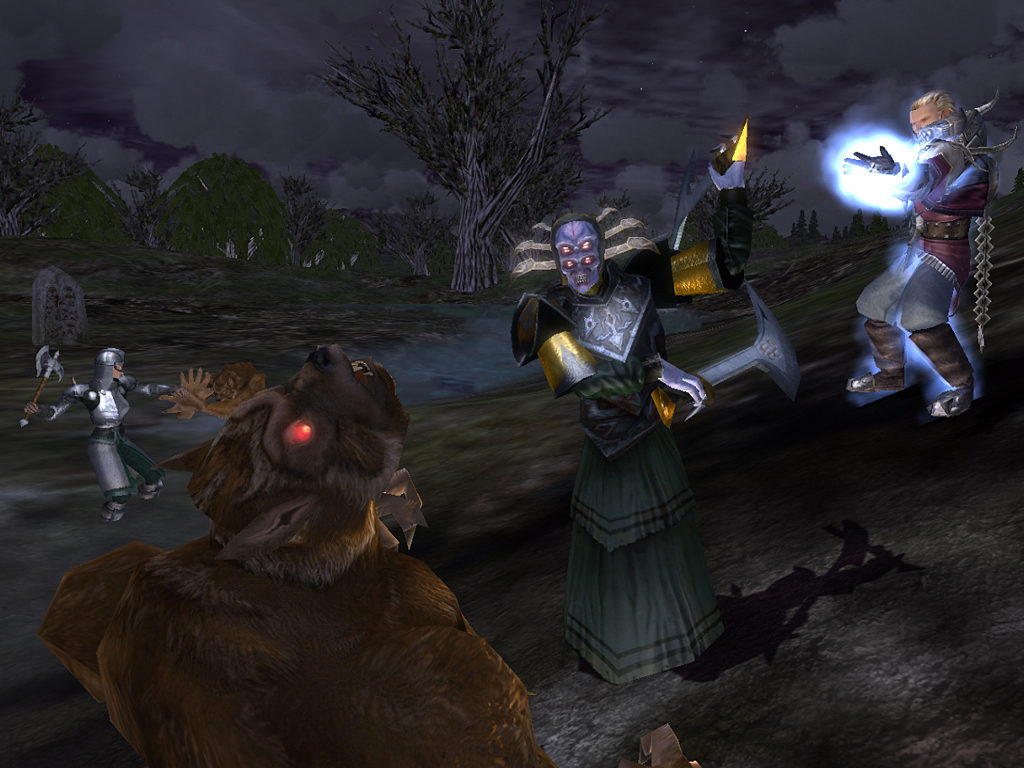
A good look at the Demonologist in action
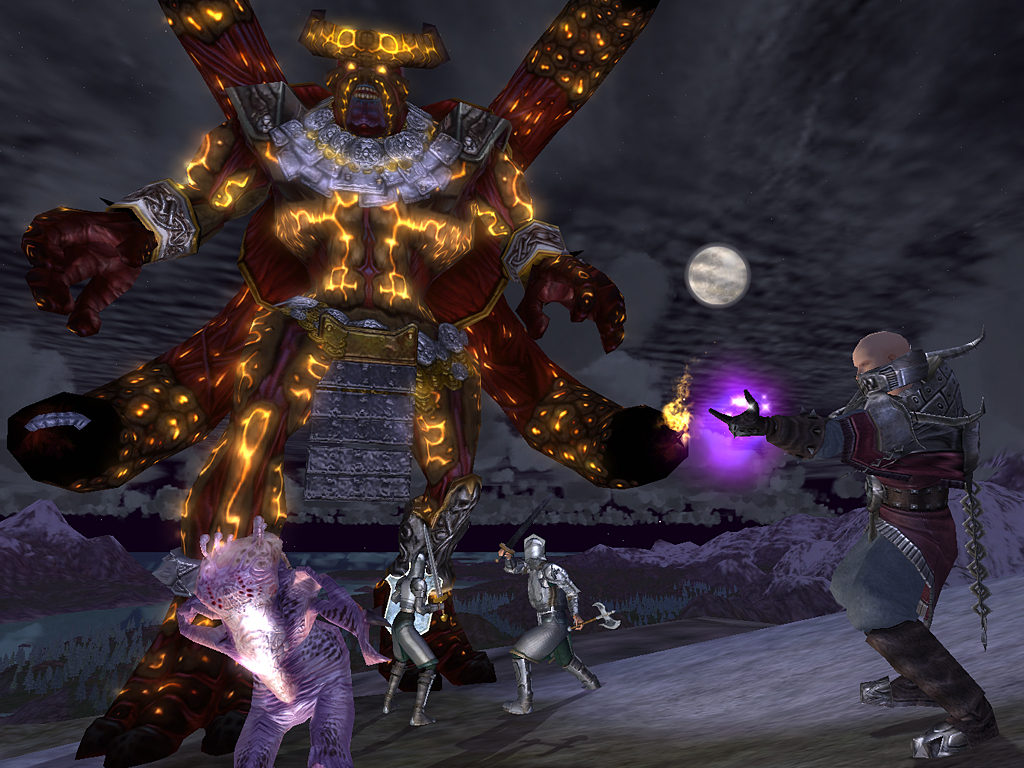
Battling a massive Fire Giant
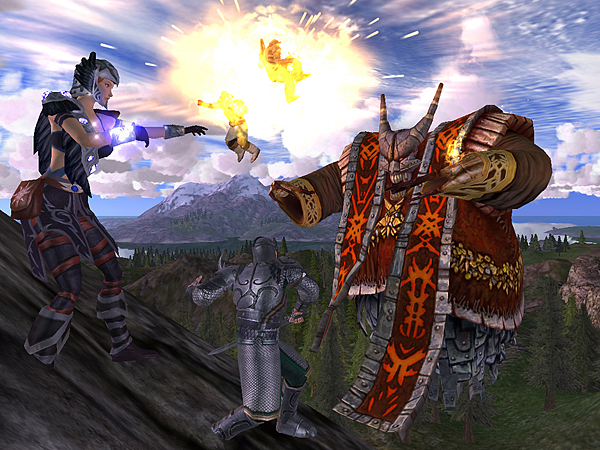
Stormwright and Warrior take on a Fire Giant Siege Caster
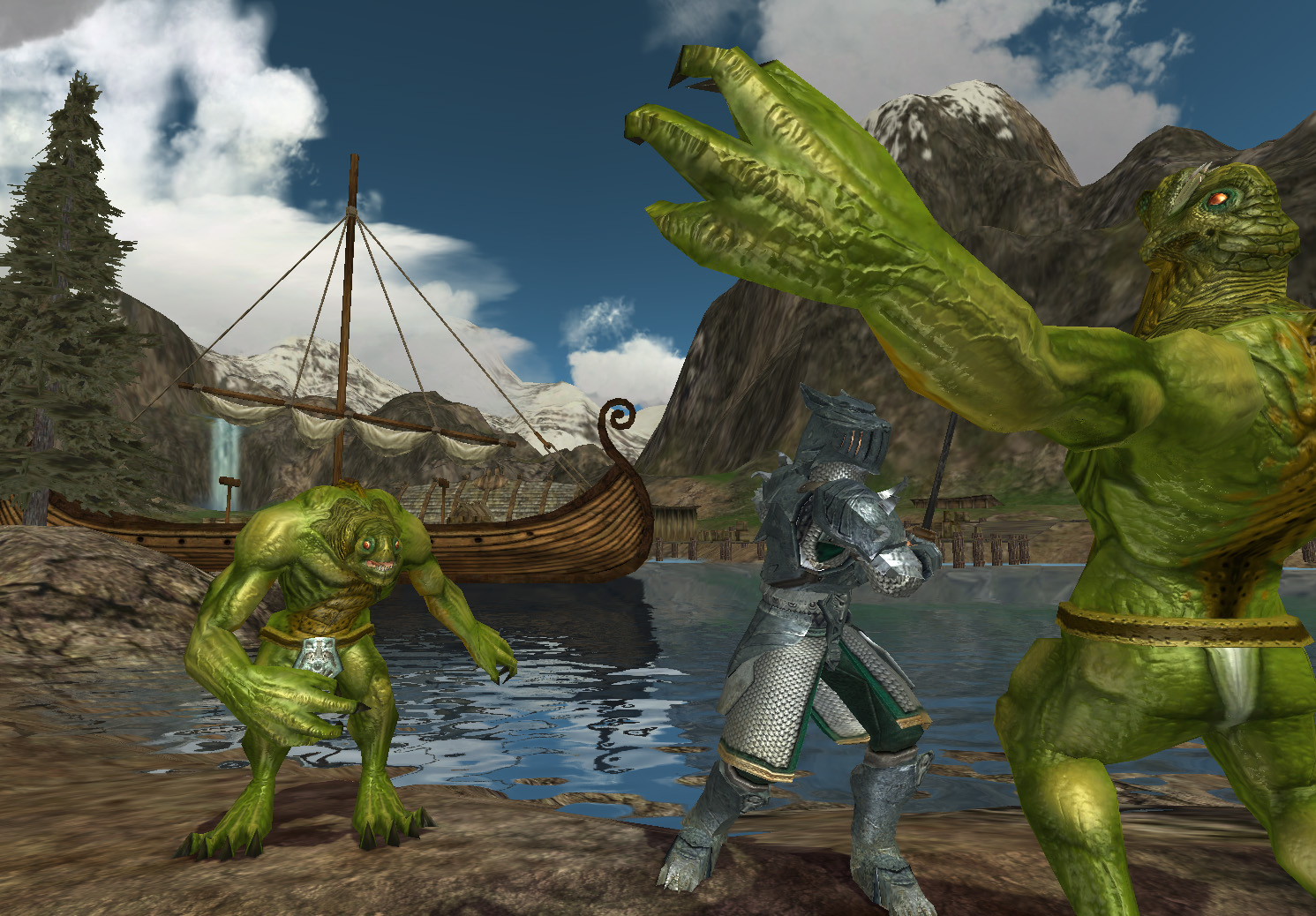
Up close and personal with a high level warrior
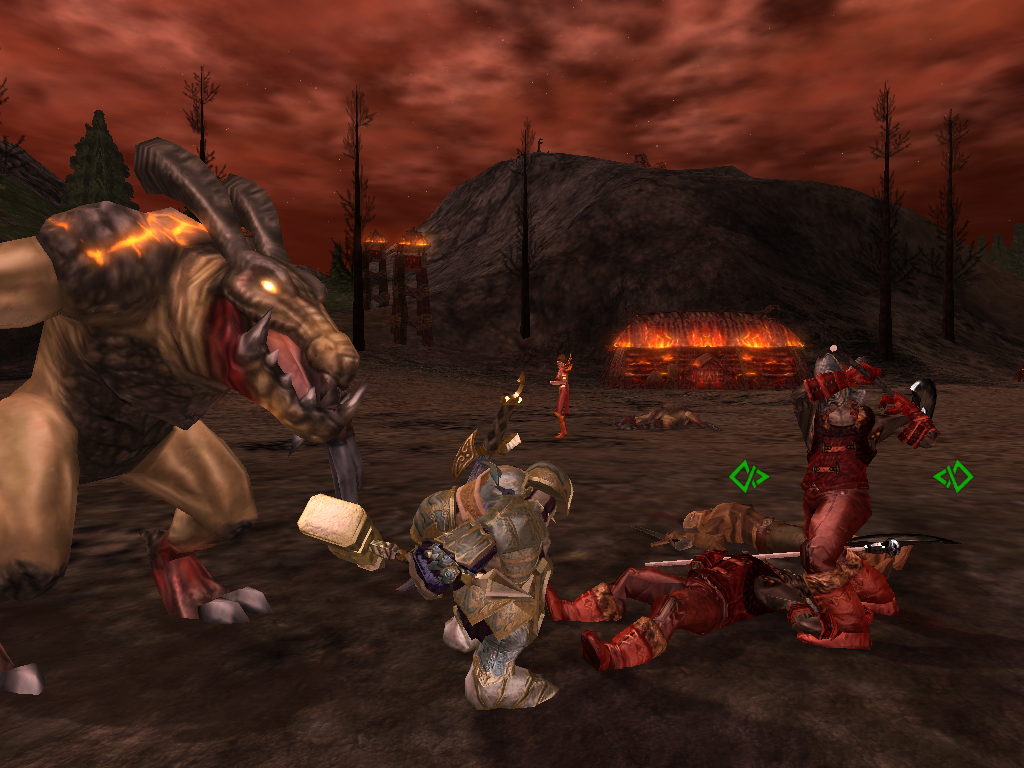
Creepers and Corruption are no match for this hero. Dwarf Smash!
To be honest, screenshots are great and everything but seeing the game in action is much better. The following link is a reprise of one of the quests we showed at E3 in 2003.
technical mumbojumbo
Mythica was graphically high-tech for it’s time but predated composite dynamic lighting models, ambient occlusion maps, or even tangent based normal maps. We essentially had an early version of a spherical harmonic light map, meaning we got a directional light vector for the dominant light source (either the sun or the moon as it tracked across the sky), an ambient omni-directional light value, and a bounce light value that pointed back at the sun/moon. Dynamic lights were costly and we used them very, very sparingly. Characters would cast shadows on the ground but not self-shadow, and because the light source moved we had no shadows from static objects. All models had the standard diffuse, specular, and normal maps, although our normal maps were painted height fields converted to normal data out of production considerations (this was pre-Zbrush or Mudbox). We also had a detail normal map that provided additional surface detail at close proximity. Most of the models in the game were under 2000 polygons, with high level heroes and boss monsters approaching twice that.
Mythica used a proprietary engine developed by the superbly talented programmers at Microsoft. Our dynamic weather system came from MS Flight Simulator, our water from Microsoft Research. The global lighting system was incredibly (possibly overly) complex, simulating atmospheric density and color distortion. The tech in the game was great, the art (if I do say so myself) was great, and the gameplay was really quite revolutionary for an MMO. We had, at most, a year left on the project but a change in business focus for MGS meant that we never got to finish. Mythica is still remembered annually on the lists of Best Games that Never Shipped.
art direction in action
Regardless of technological boon or limitation, Art Direction comes down to encouraging solid fundamentals: Legible silhouettes, dimensional volumes, excellent craftsmanship of painted textures, fluid animation, good light play on surfaces, and creating an evocative mood. I worked with artists daily to make sure output was of a high standard. I even submerged into environment lighting to ensure each realm really captured the proper tone.
I’ve mentioned that we had a fantastic concept art team, but the really impressive thing was how artists like John Shroades, Greg Onychuk, RK Post, Patrick Watje, and Adam Crockett were able to bring those monster concepts to life as 3D models. Leigh Kellogg and Gene Kohler nailed the outfits and character models, creating sexy and powerful heroes. Michael Cahill, Gene Kohler, Rob Johnson, Jim Millar, and Deanna McGahan built lush worlds for the action to take place. Steve Scott made incredible special effects (and he modeled and textured some great creatures as well). And the animation team (Robert Smiley, Mary K Omelina, and Theron Benson) created an incredible range of expressive and powerful motion, bringing everything to life. The team really captured all the excitement of the concepts and it was a tremendous honor to lead them.
Mythica – the Process
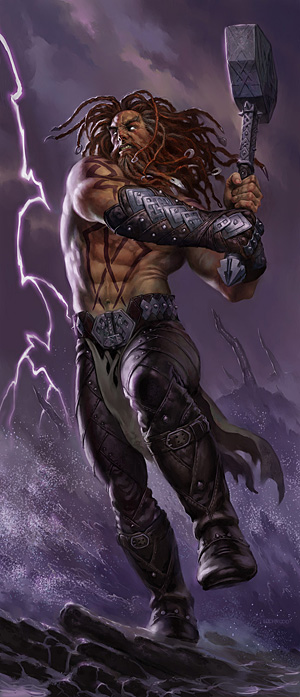
it starts with a concept…
Mythica was about living the afterlife of a fallen Norse hero, leaving behind Asgard and the Halls of Odin to do battle against the fire giants. The player was but one of many such heroes brought back into the mortal world to gather human followers and defeat the rising tide of corruption devastating the many realms of the Norse pantheon. To support such an ambitious idea it was critical that we elevate the world of Norse Mythology beyond merely a Viking life simulator. We needed to bring a sense of wonder and mystery to the environments, create a vast wealth of fantastic monsters and creatures, and design several attractive avenues for players to pursue on their way to becoming a Norse God! Piece of cake.
One of the most important tools for an art director is quality concept art. Concepts should do more than just inform the production staff about what they’re about to build. Great concept art inspires and provides clarity for the entire team. Remarkably, Wizards of the Coast had assembled a large group of world-class talent right in our own back yard and recently let a bunch of their staff artists go. We contracted the inimitable Sherry Floyd to help corral some of my favorites and we were off and running. Many of the folks, including Sherry, had just finished doing a marvelous job of upgrading the look of the venerable Dungeons and Dragons franchise so they were absolutely perfect for a Norse Mythology face lift.
With a strong concept team secured I was able to deeply engage with the designers (Hal Milton, Tony Iuppa, and Joel Manners) to flesh out back story, identify key elements specific to regions for establishing mood and tone, and create a visual system to differentiate roles and ranks for players. The team created hundreds of glorious concepts, with incredible pieces from the likes of Sam Wood, RK Post, John Shroades, Anthony Waters, Brian Snoddy, Greg Onychuk, Leigh Kellogg, Rob Johnson, Michael Cahill, Scott Fischer, Todd Lockwood, Anthony Waters, and Dana Knutson.
created in Odin’s image, the aesir
Norse mythology is full of bold, iconic characters. Tyr, Odin, Thor, and Freya…characters so potent that we utter their names when we talk about days of the week (Tuesday derives from Tyr’s Day, Wednesday from Odin’s day, Thursday is Thor’s day, and, yup, Friday belongs to Freya). It was absolutely vital to not only create compelling depictions of these deities but also to elevate their immortal brethren, the Aesir. Some examples follow…
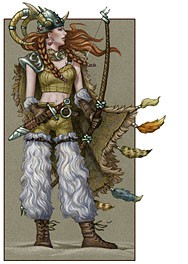 |
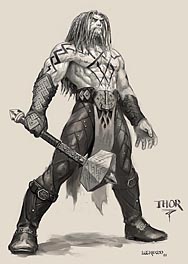 |
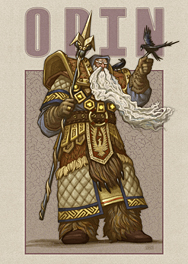 |
| concept: John Shroades | concept: Todd Lockwood | concept: John Shroades |
|---|---|---|
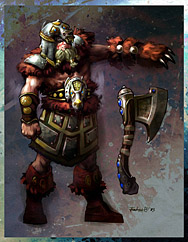 |
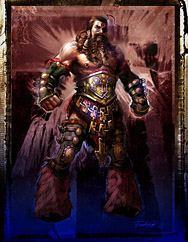 |
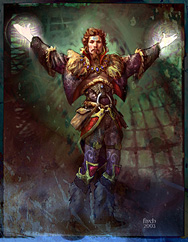 |
| concept: Scott Fischer | concept: Scott Fischer | concept: Scott Fischer |
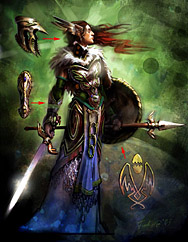 |
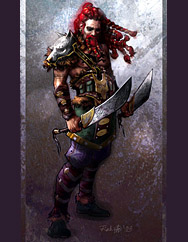 |
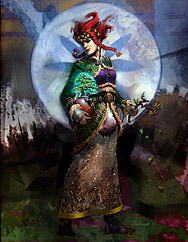 |
| concept: Scott Fischer | concept: Scott Fischer | concept: Scott Fischer |
Mythical Realms
The lands visited by our heroes ranged from frozen wastelands to lush, tropical forests. I wanted each Realm to embody a specific theme with it’s own color palette and signature shapes (both natural and manufactured) to make each place feel iconic and memorable. Midgard was rustic but charming; Jotunheim, frozen and blustery; Asgard, autumnal and warm; Nidavelir, dark and wet and underground; Muspelheim, scorched and foreboding; and Vanaheim, lush and exotic.
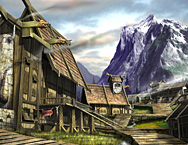
| 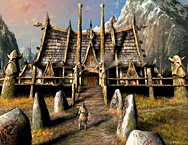 |
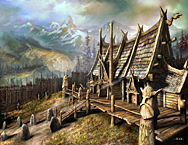 |
| concept: Rob Johnson | concept: Rob Johnson | concept: Rob Johnson |
|---|---|---|
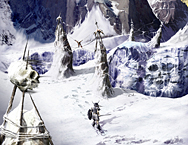
| 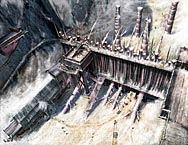 |
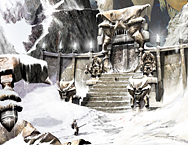 |
| concept: Rob Johnson | concept: Rob Johnson | concept: Rob Johnson |
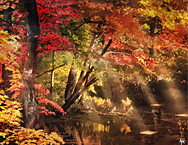
| 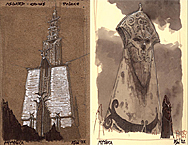 |
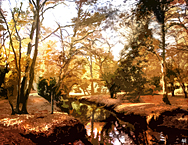 |
| concept: Michael Cahill | concept: Anthony Waters | concept: Michael Cahill |
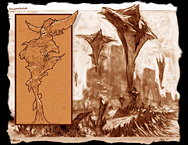
| 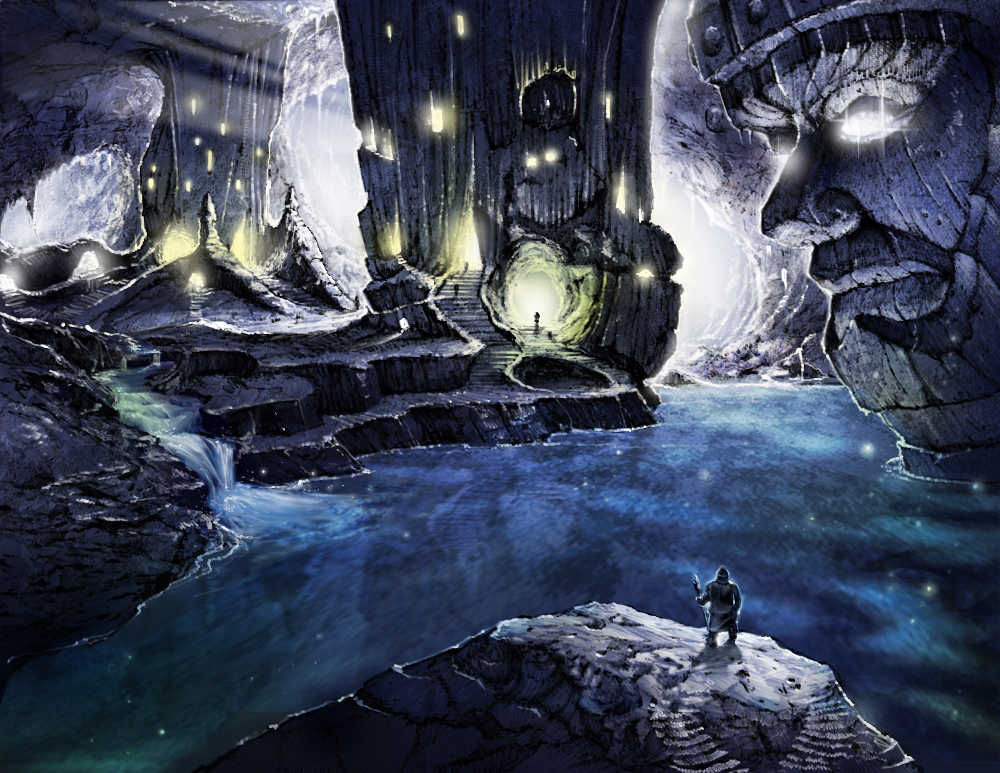 |
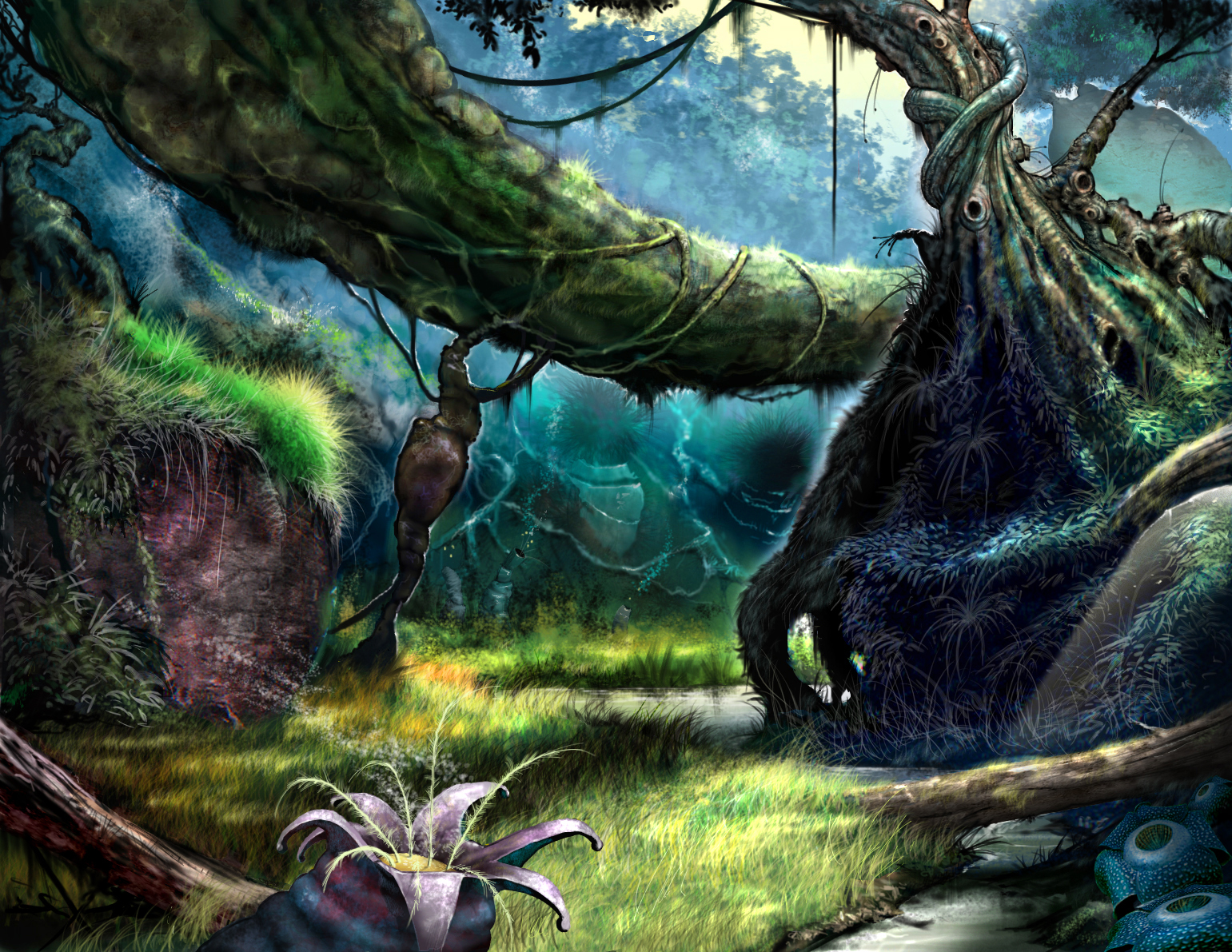 |
| concept: Anthony Waters | concept: Rob Johnson | concept: Rob Johnson |
epic heroes
The designers had plans for several highly unique roles, each one needing to look unique, work on a variety of body shapes, and allow for character progression over time. I worked very closely with Sam Wood on the concepts and Leigh Kellogg on the technical direction to devise a plan for swappable components designed within a set of shapes that created unique silhouettes for each role. For example, Pyromancer gear would only work with other Pyromancer gear but the combinations of just 3 completely componentized outfits could easily turn into hundreds of player variants. Our biggest challenge was to make the characters as interesting to look at from the back (where the player would spend most of their time looking) as from the front, but Sam is a master at integrating big ideas into a beautiful plan. Some of the more striking designs are below.
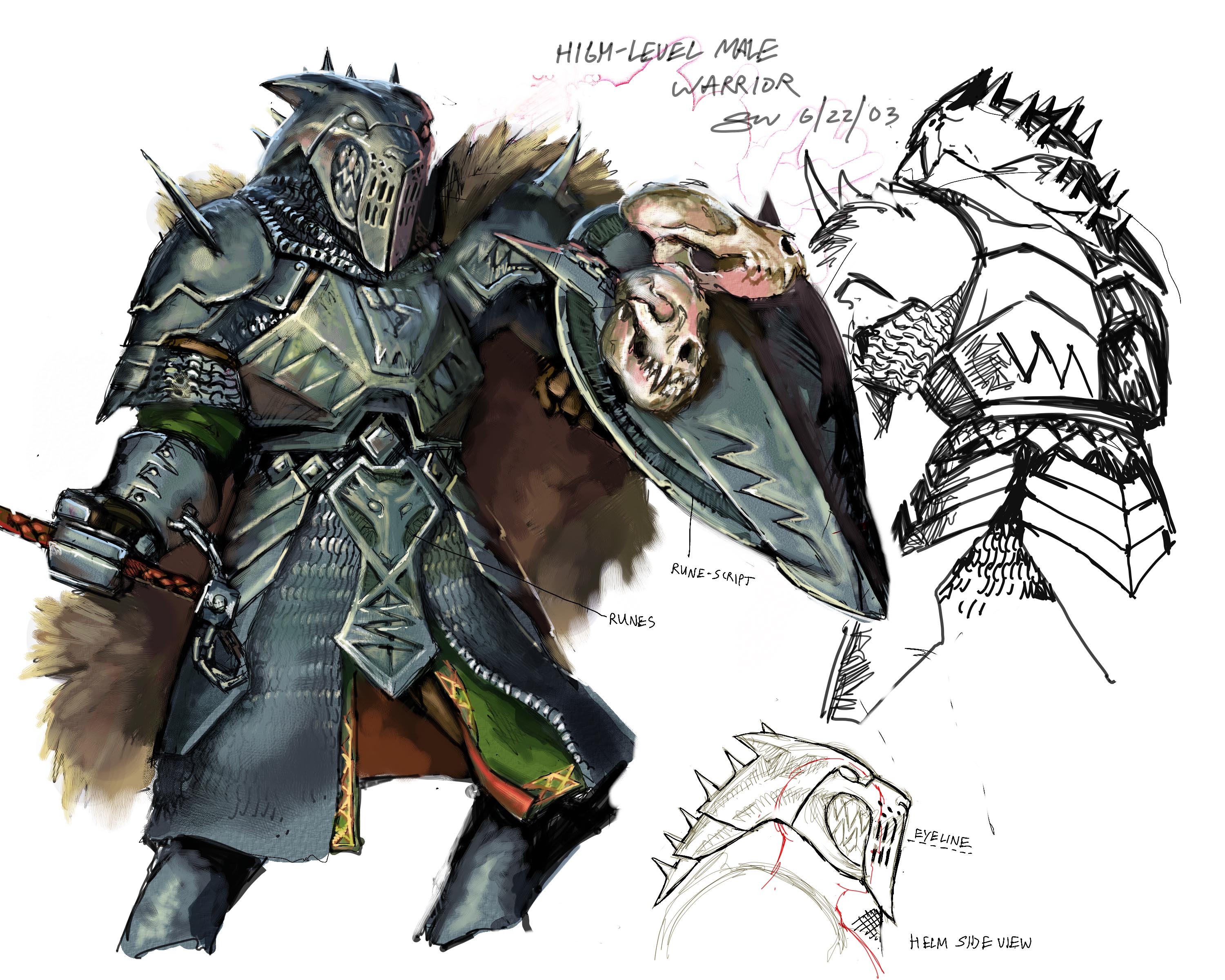 |
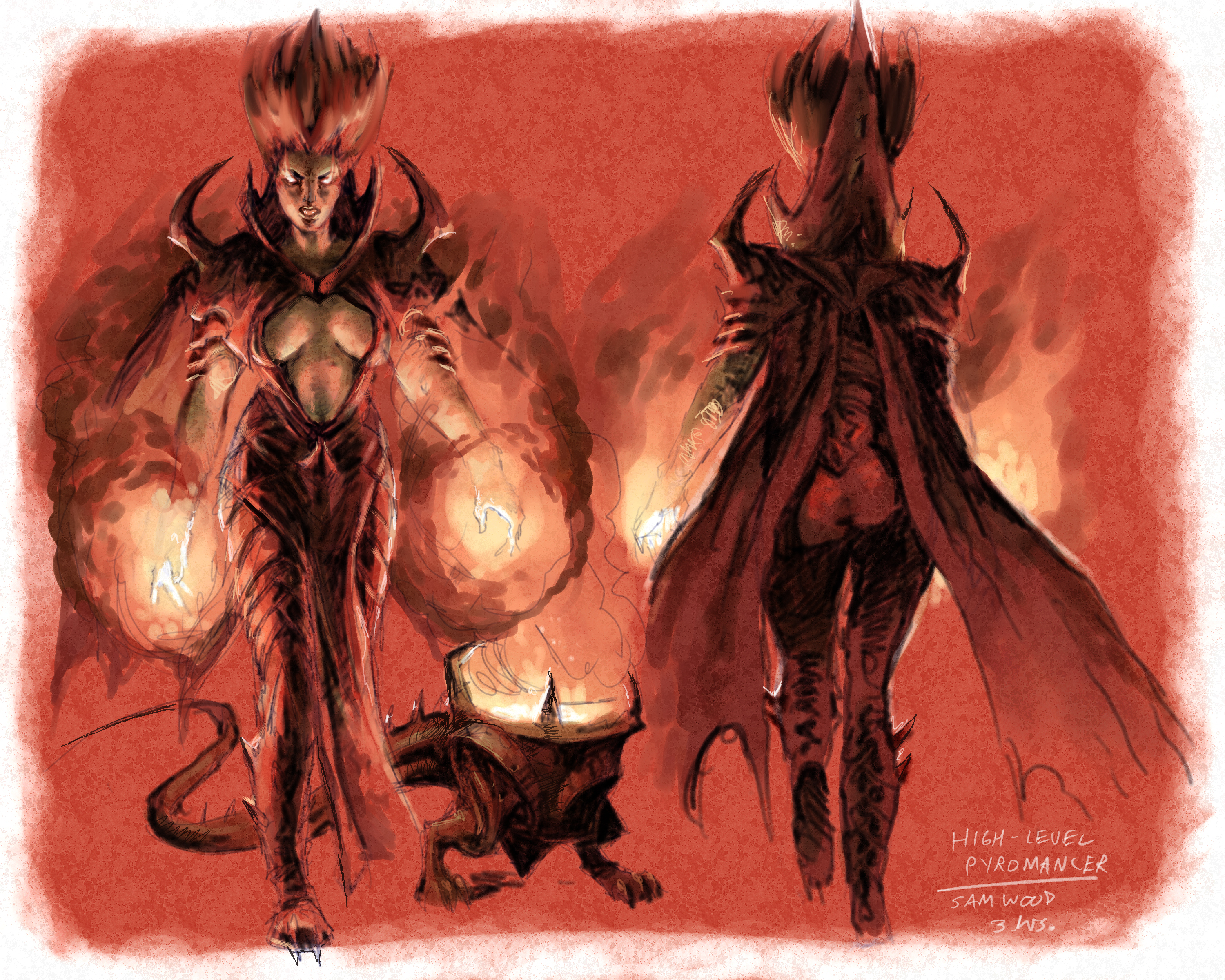 |
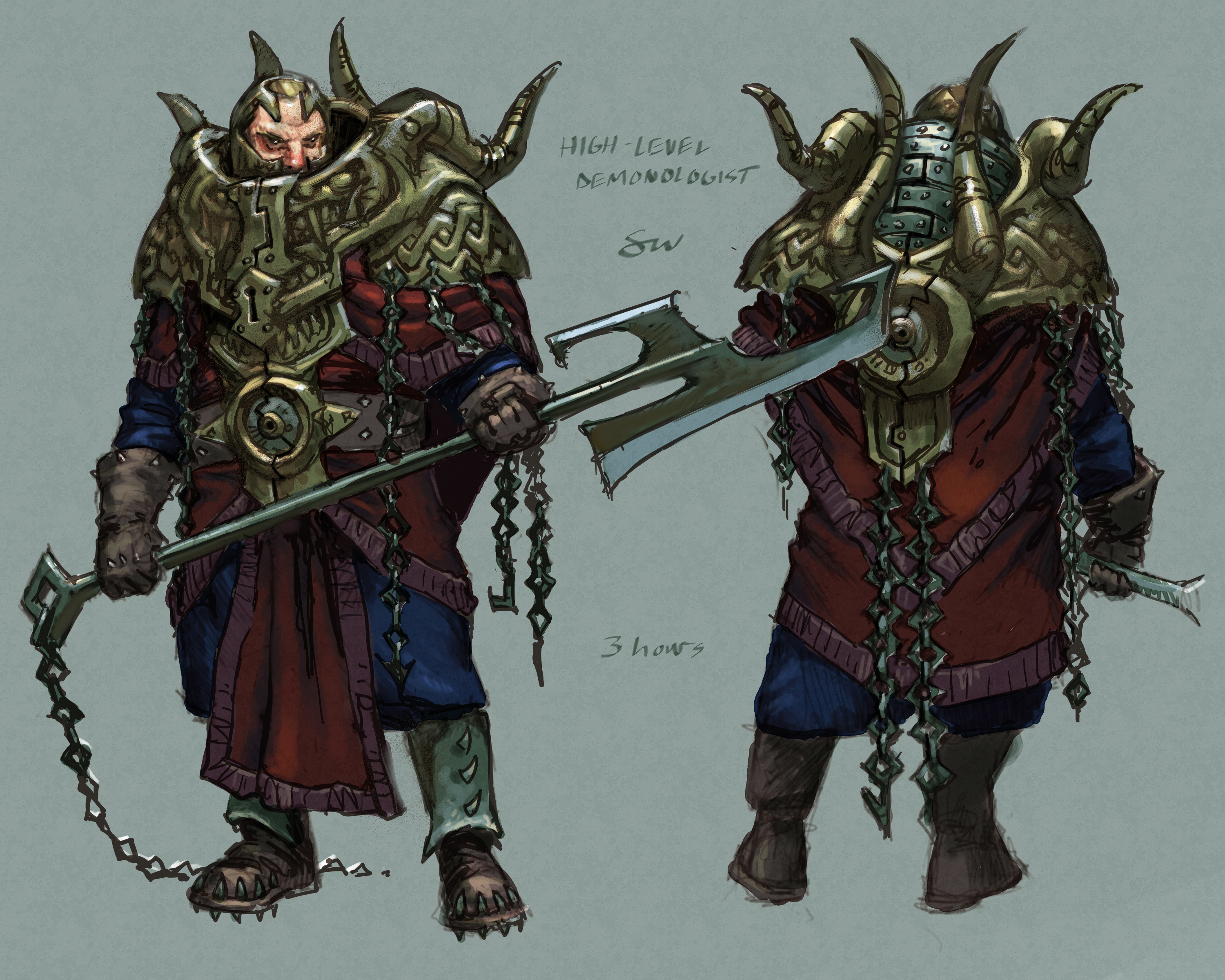 |
| concept: Sam Wood | concept: Sam Wood | concept: Sam Wood |
|---|---|---|
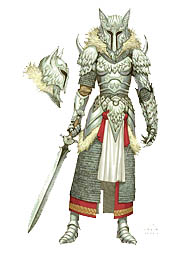 |
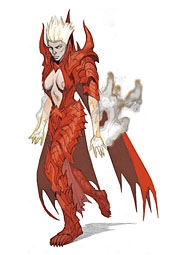 |
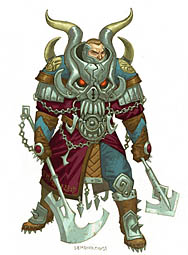 |
| concept: Steven Prescot | concept: Steven Prescot | concept: Steven Prescot | 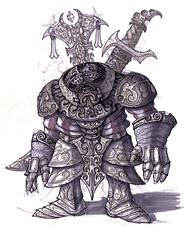 |
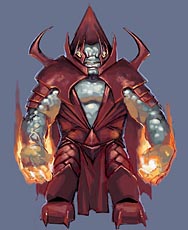 |
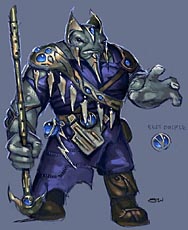 |
| concept: Greg Onychuk | concept: Sam Wood | concept: Sam Wood |
monster mayhem
When it came to monster design it was important to put our own unique stamp on the appearance and personality of the beasts. Whether savage wildlife in Vanaheim or frozen ice trolls in Jotunheim, we made it our point to create unique interpretations that you would only find in Mythica. John Shroades’ inventive take on the Fire Giants really served as a catalyst for everything else, but from those early beginnings we designed over 200 completely original creatures, many with a system of interchangeable armor bits or accessories. A brief selection follows.
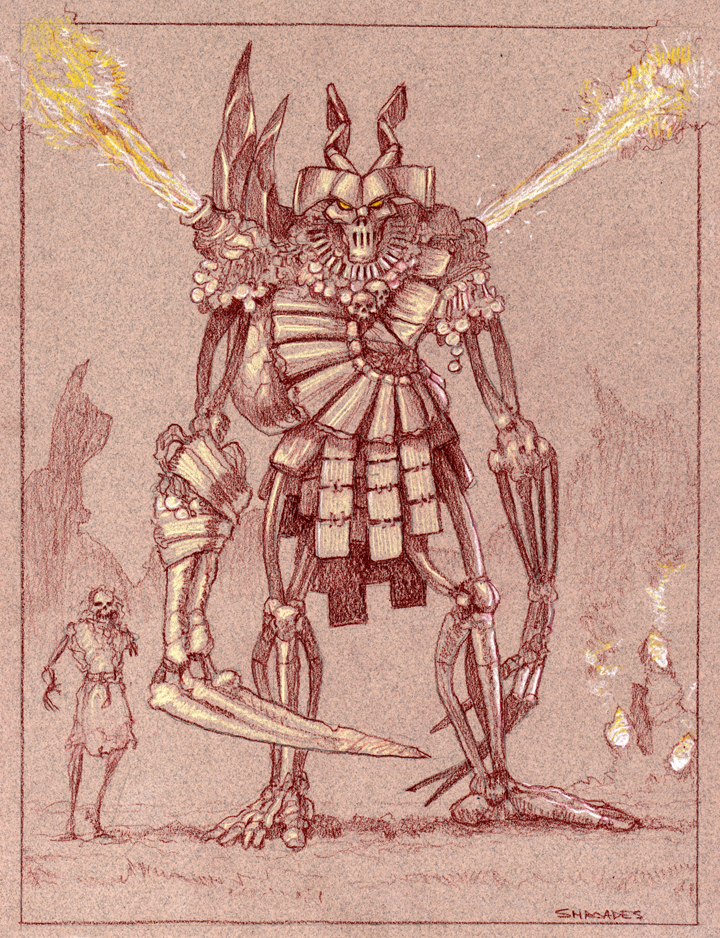 |
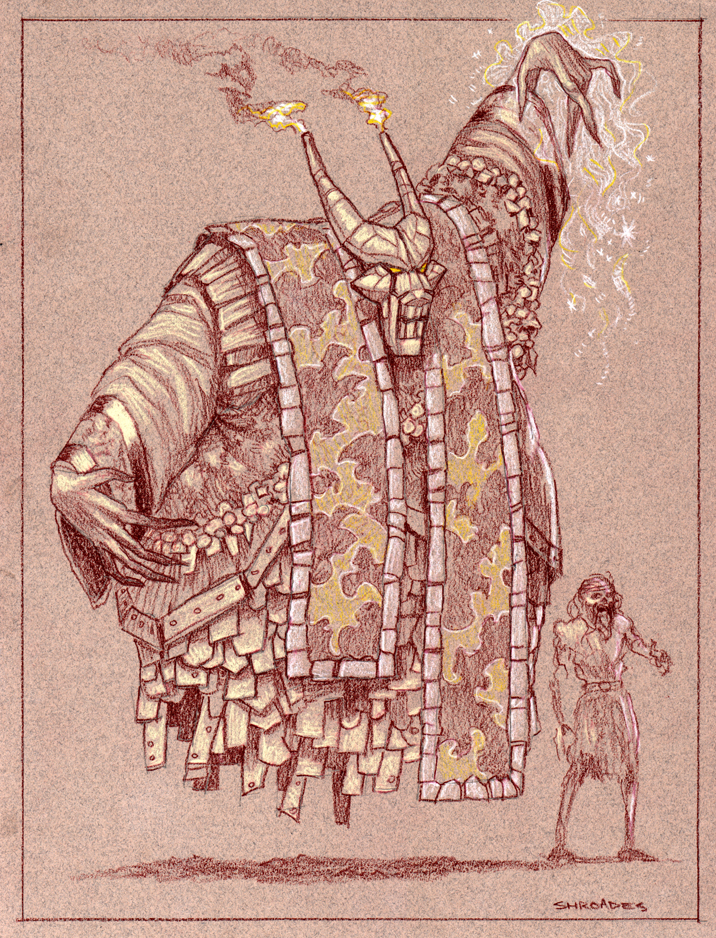 |
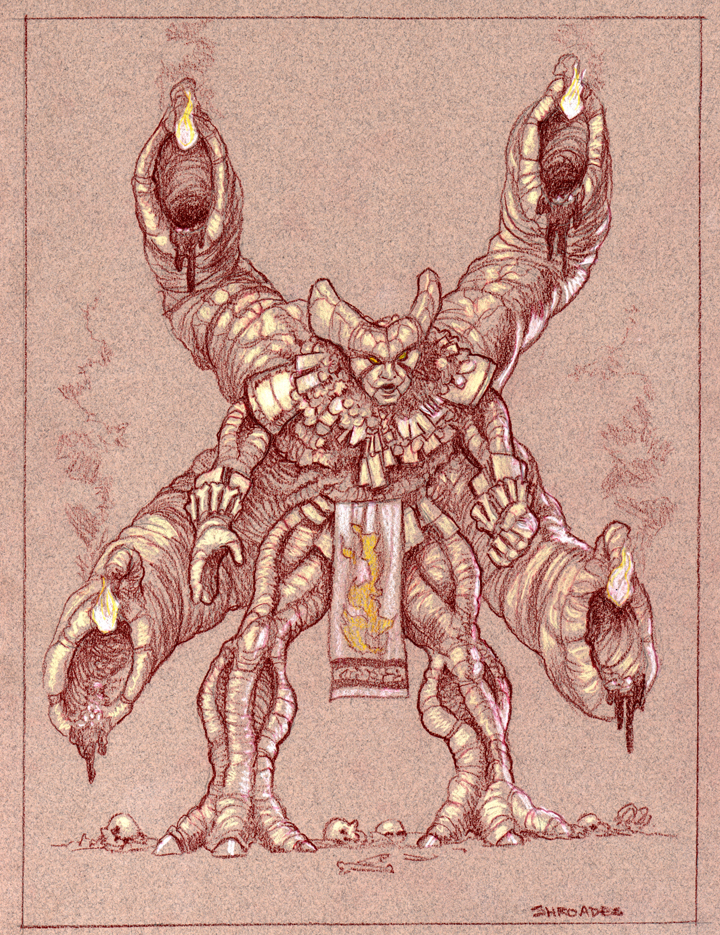 |
| concept: John Shroades | concept: John Shroades | concept: John Shroades |
|---|---|---|
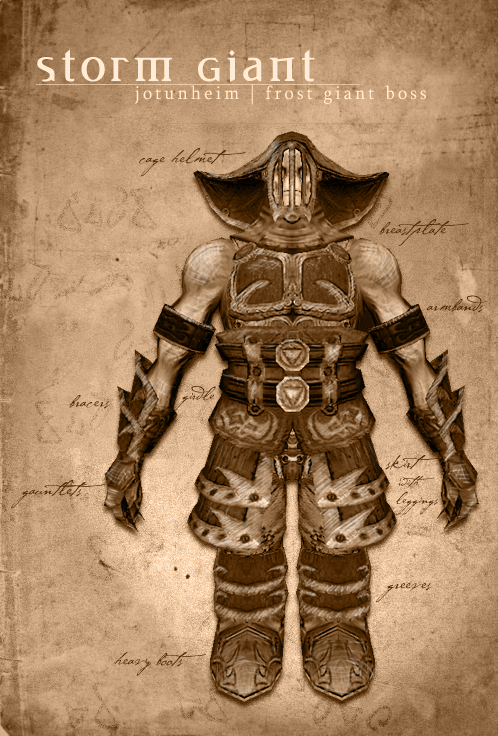 |
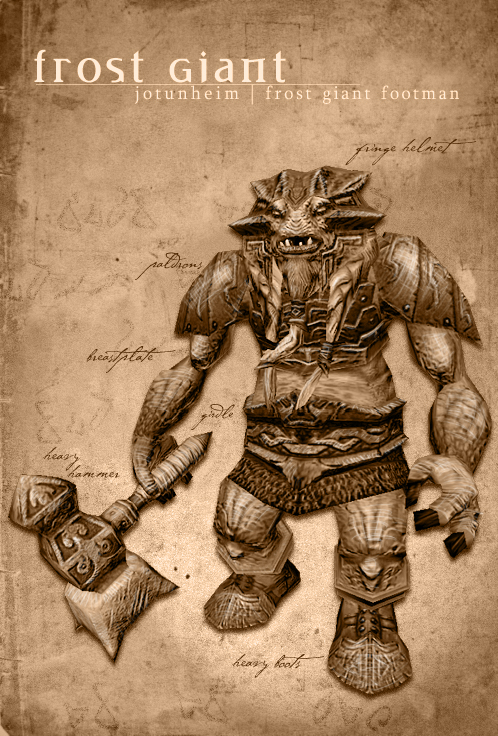 |
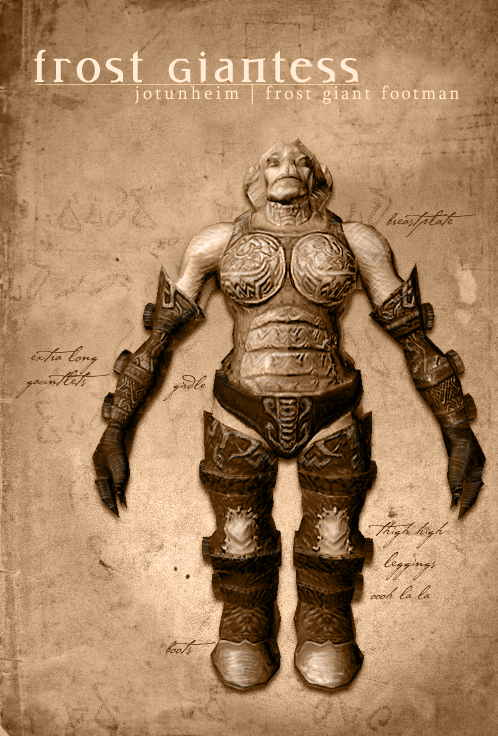 |
| concept: Greg Onychuk | concept: Greg Onychuk | concept: Greg Onychuk |
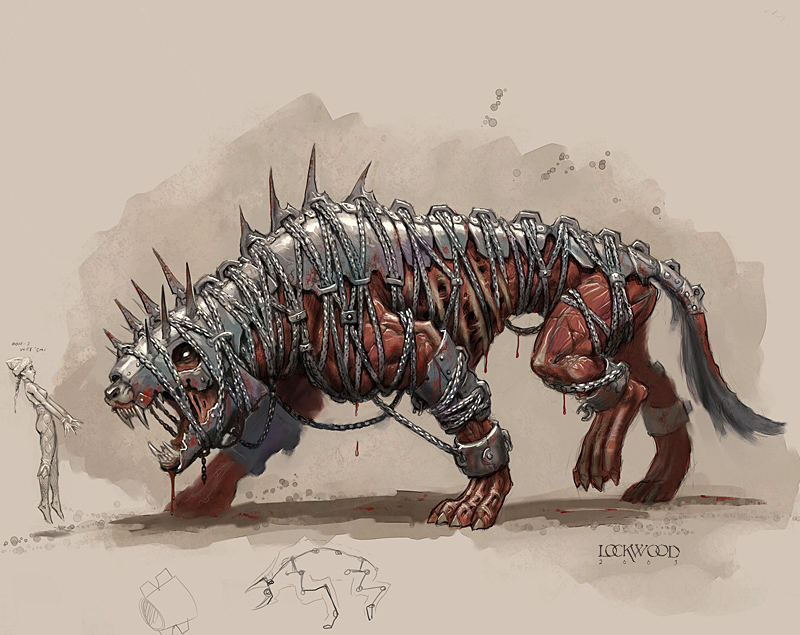 |
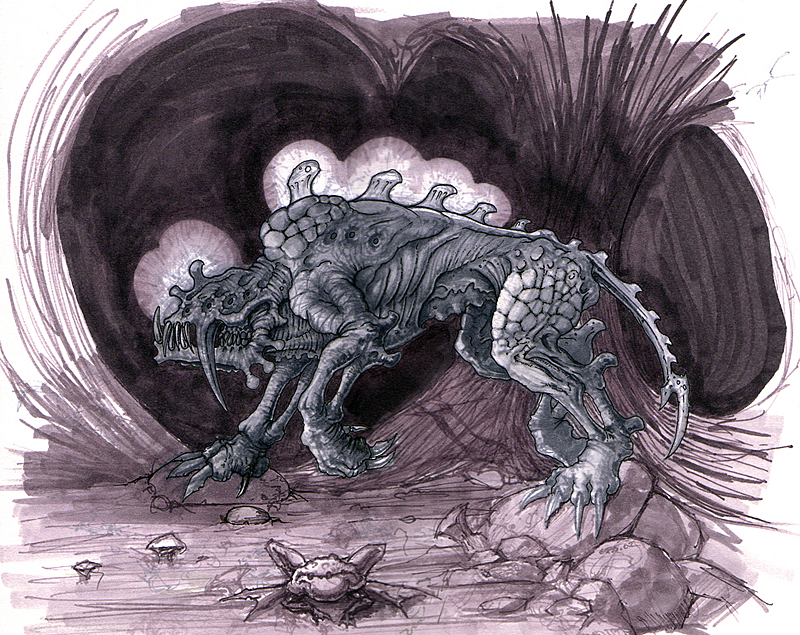 |
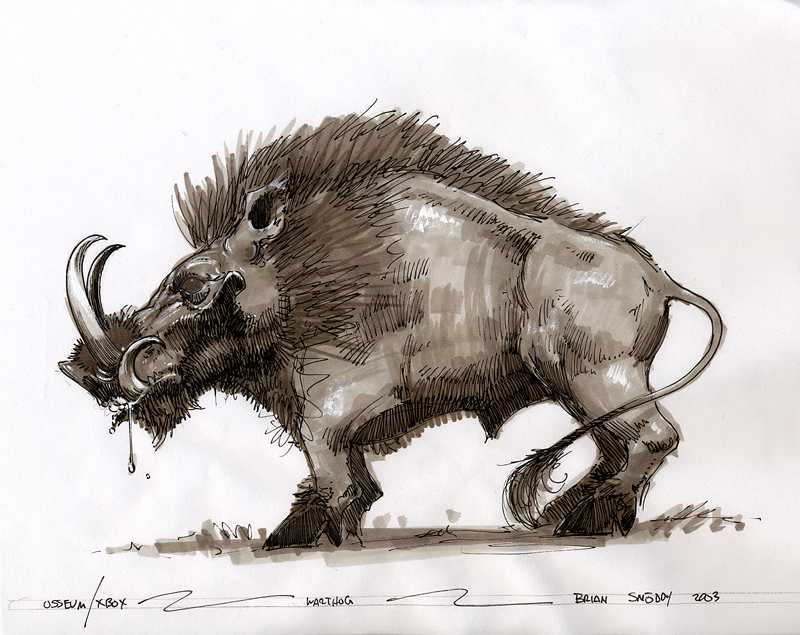 |
| concept: Todd Lockwood | concept: Greg Onychuk | concept: Brian Snoddy |
signature weapons
No game about fallen viking heroes would be complete without a vast arsenal of brutal and powerful weapons. My direction to Brian Snoddy was simple: these are godly weapons, so embellish the heck out them. (A nice collection of carving samples from Heddal Stavkirke helped as well). Here’s just a few…
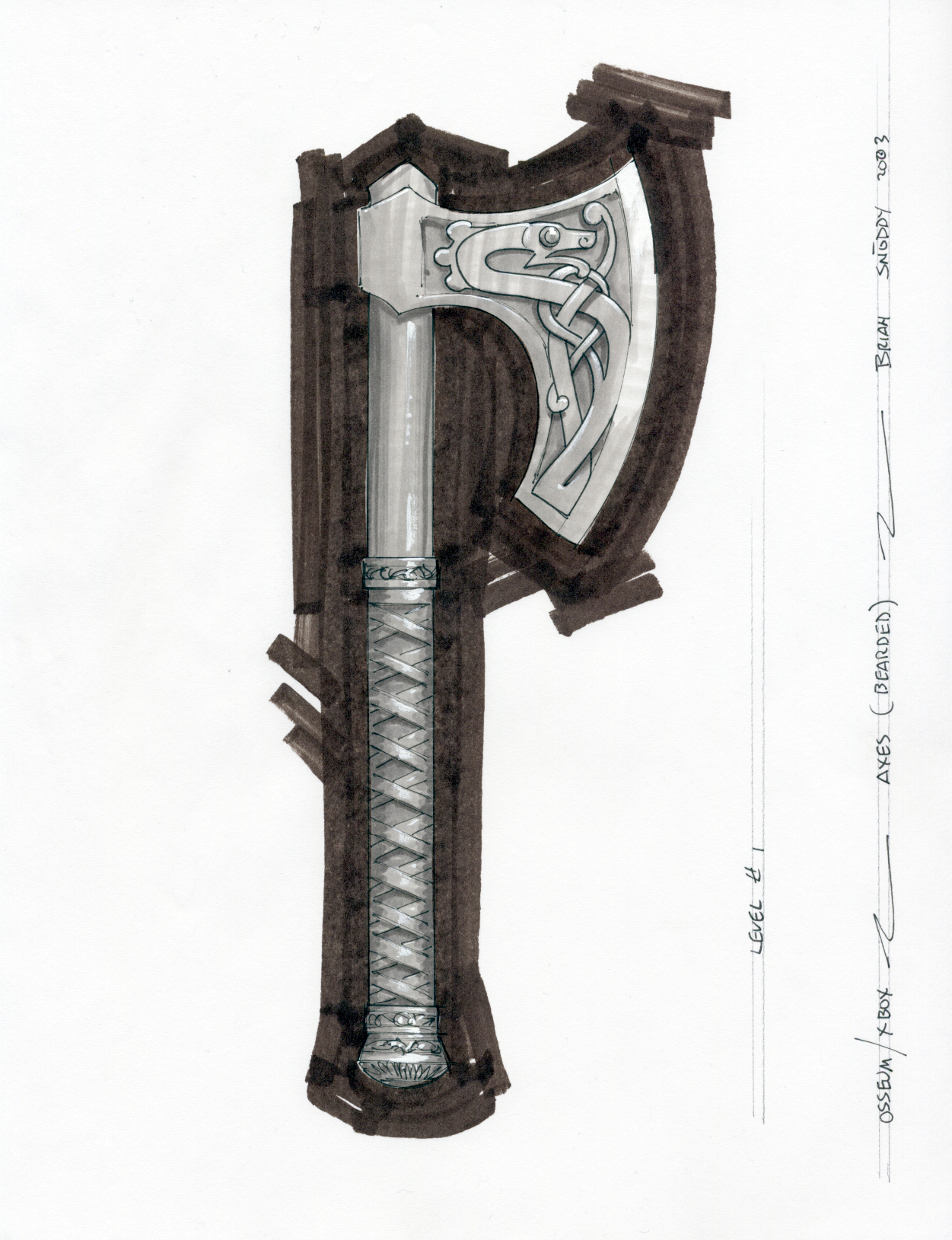
| 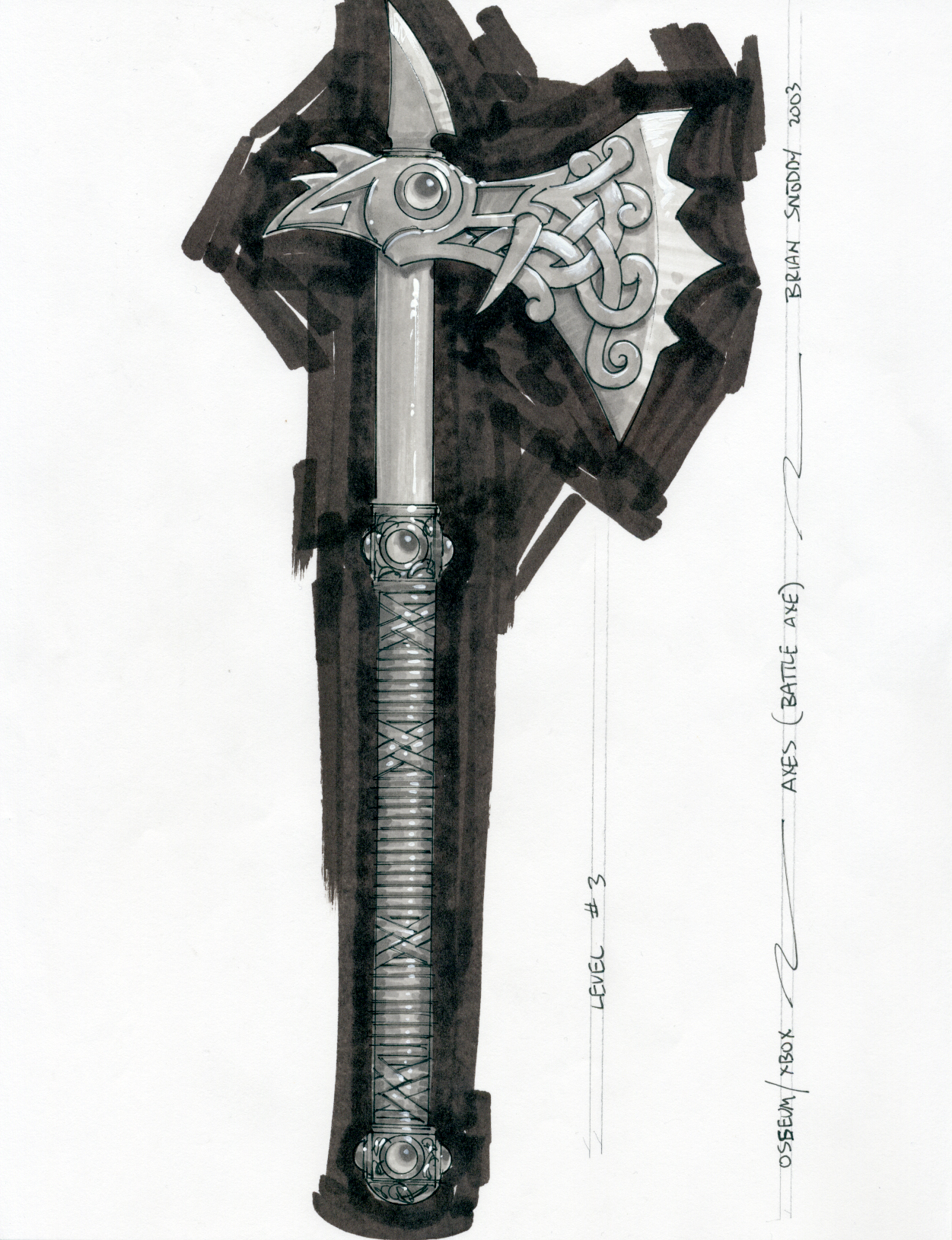 |
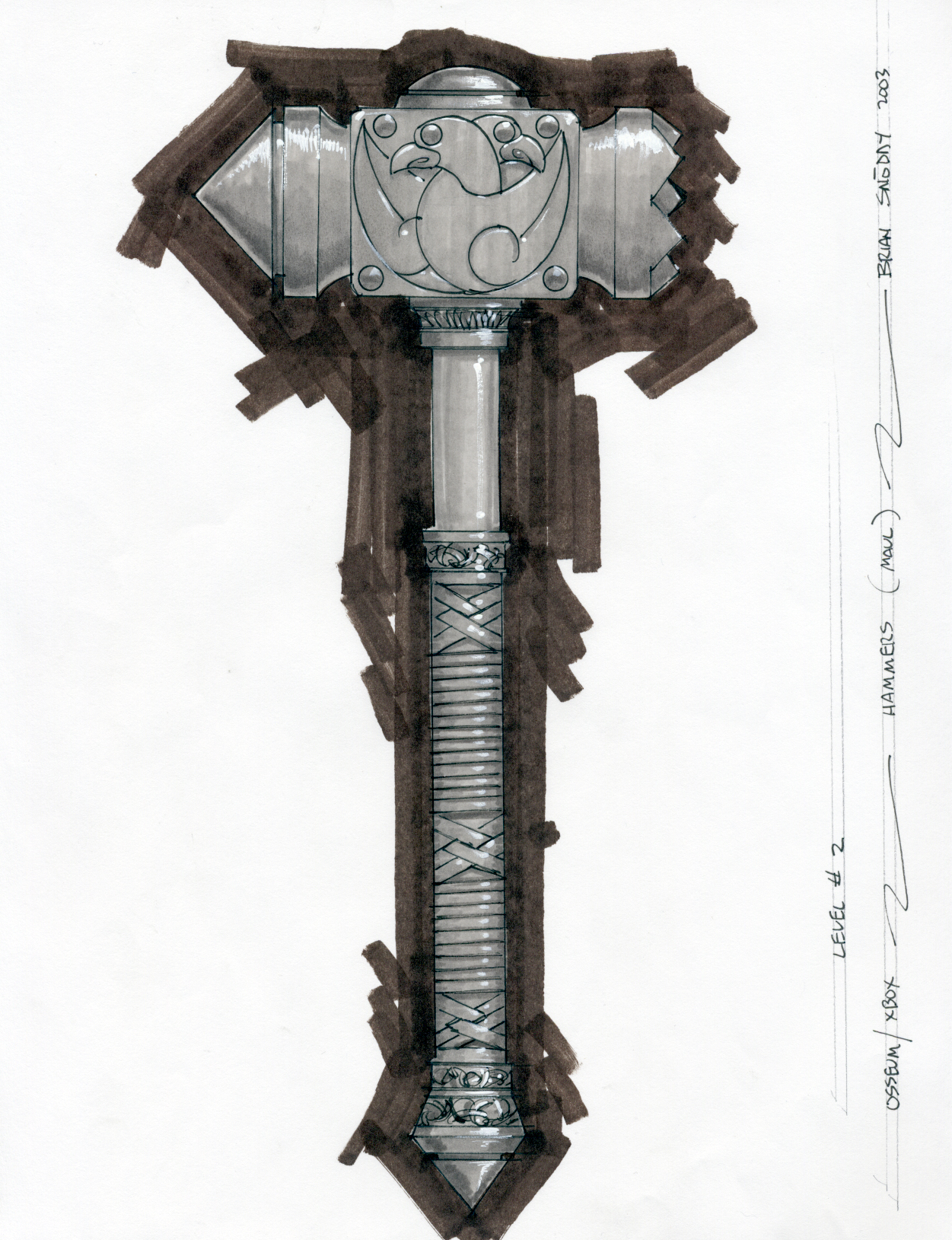 |
| concept: Brian Snoddy | concept: Brian Snoddy | concept: Brian Snoddy |
|---|
Mood and Tone
But even the best concept artist needs guidance. This is where I borrowed a couple pages from the ad/marketing folks by writing creative briefs and crafting mood boards. Depending on the relationship with the artist the brief might be as long as few paragraphs or as short as a descriptive name. Moodboards were assembled from whatever reference material is appropriate…some times photographs, sometimes paintings, and, as the game progressed, screenshots of pertinent assets. The selections were carefully editorialized to represent a consistent use of color, tone, and shape, which provided a fertile ground for creative interpretation. [I intend to post samples here but need to locate some]
Once concepts meet my approval and satisfy the needs of design, they’re placed in the production queue. And that’s where things get really cooking.
asset creation on an epic scale…
MMOs are big. You know how Douglas Adams goes on and on about space and how big it is? Well, he wrote that before we had MMOs. MMOs are big. And in order to support them you need to be constantly thinking about how to build on top of things and expand things and not break all the things that were built in the past. You need to plan carefully so that you can leverage every investment you make in asset creation because you or the team maintaining the game will have to live with your decisions for years to come. You’re also dealing with a game that is consumed over hundreds of hours (not tens like typical single player games) so it is important to create systems that result in additional content through new combinations of existing parts. While a team of 80 can build 12 hours of AAA content, nobody wants a team of 800 building content for 120 hours of play. This is a classic case for working smarter not harder.
One of the most significant ways I helped the team work smarter was to translate the goal of creature archetypes, subtypes, and multi-types into an actionable plan. Recognizing that animation was one of our biggest expenses (both in terms of content production and performance cost) I worked diligently to ensure that the hundreds of planned creatures would work on only a dozen skeletons.
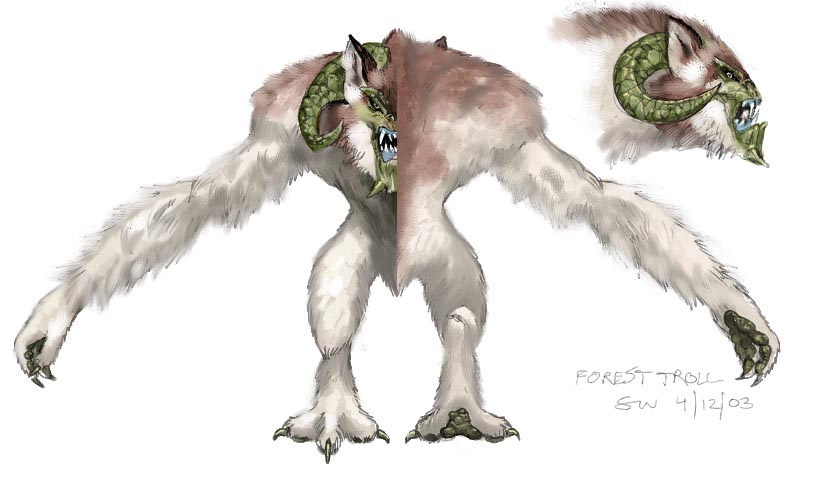 |
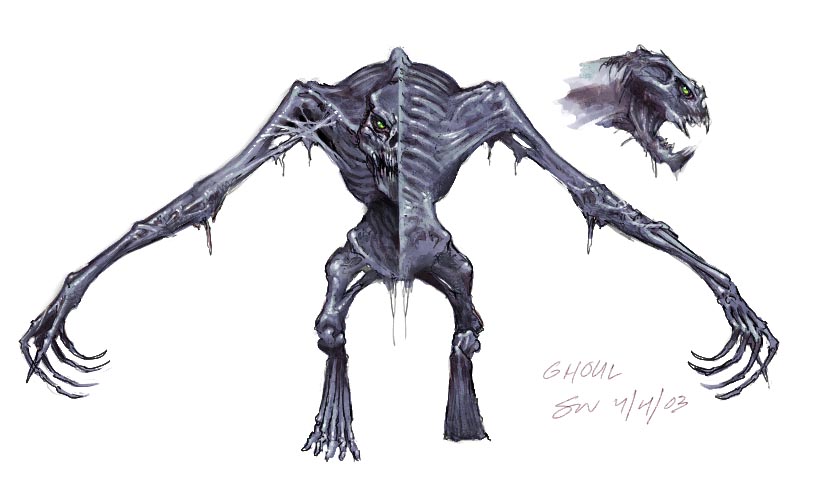 |
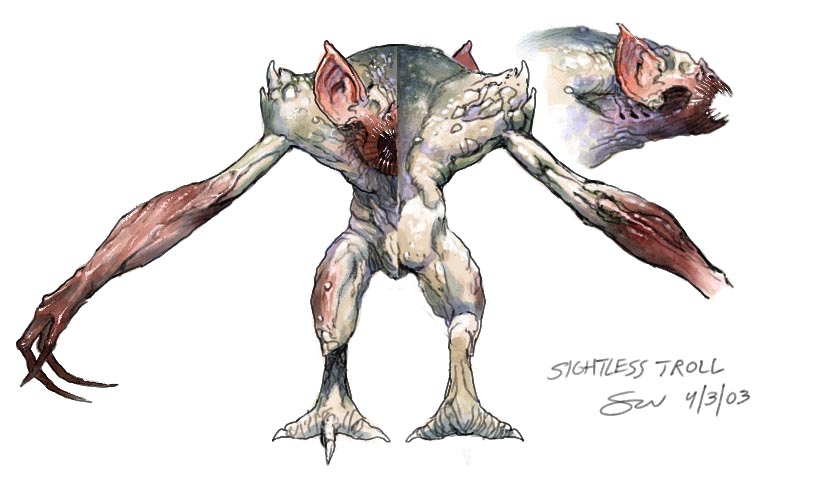 |
| concept: Sam Wood | concept: Sam Wood | concept: Sam Wood |
|---|
We also designed our humanoids to accept armor as attachments. That way one creature (or character) could be accessorized a number of ways to create a tremendous variety of assets for only slightly more cost than producing one. This approach necessitated coordination and support from programming as the method required an in-engine mesh and texture merging solution to keep the draw calls under control. But the cost:benefit ratio was clearly balanced on the benefit side, and, thus, dozens of assets became thousands.
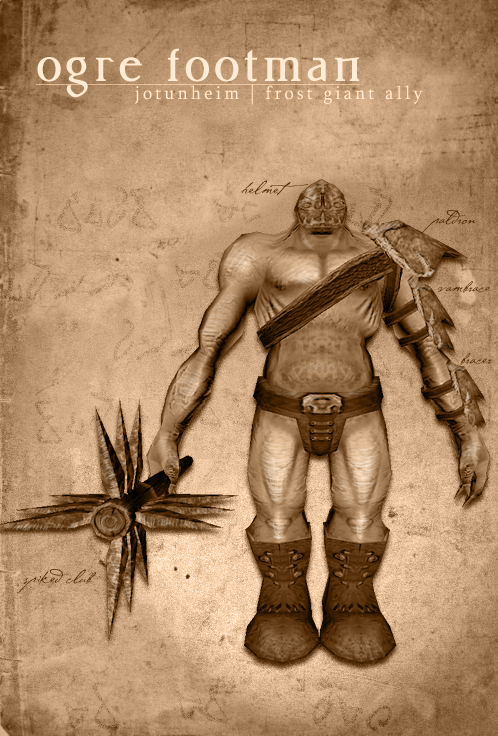 |
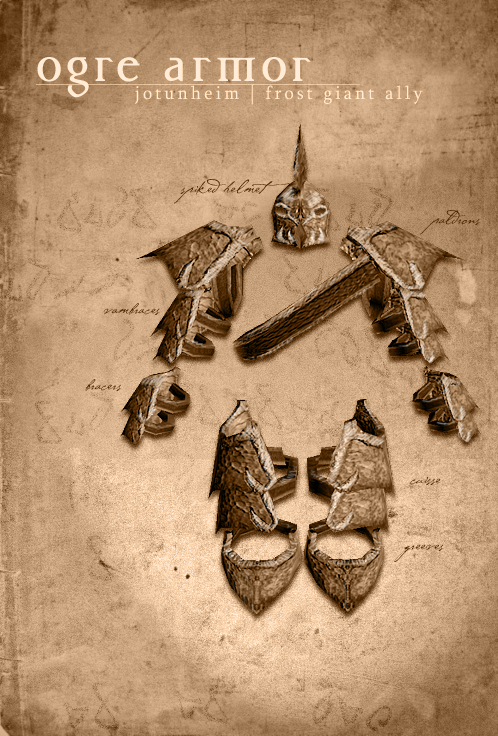 |
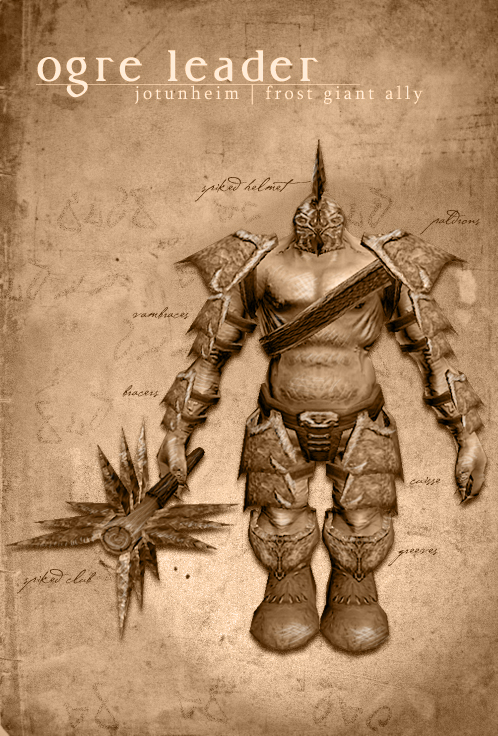 |
| archetype | armor set | subtype |
|---|
MGS – Psychonauts
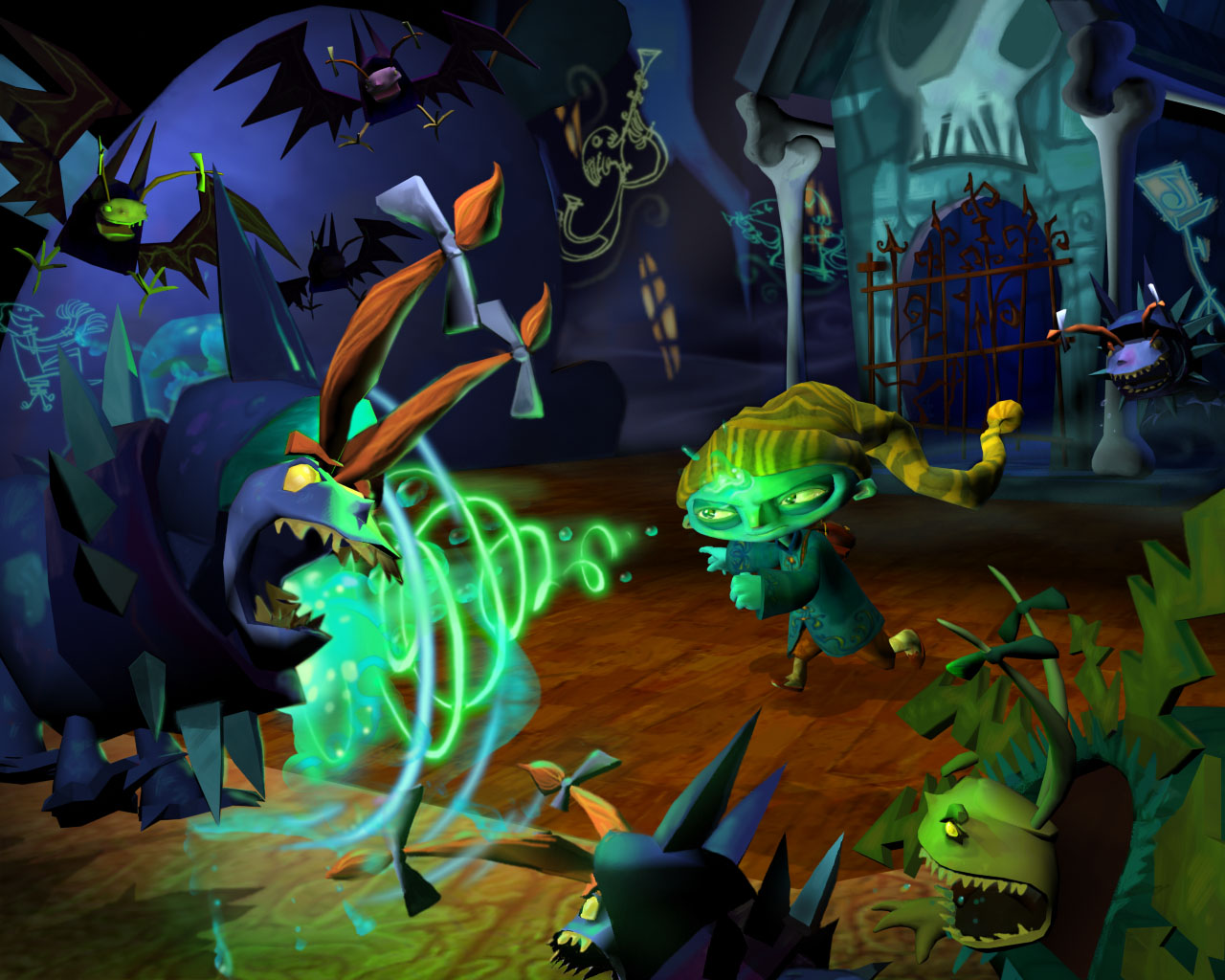
dude, what’s with her hair?
While Majesco delivered Psychonauts to retail it was Microsoft who initially invested in Tim Schafer’s startup venture, DoubleFine. I was involved with the project on the publishing side from the due diligence phase through almost 2 years of production. During that time the routine of evaluating assets and verifying production against a schedule accounted for much of my time. But my most significant contribution to the project was defending Scott Campbell’s and Tim Schafer’s vision. I worked tirelessly to gather as much supporting material as possible to prove the marketability of their highly stylized characters and environments.
I was also involved in focus group testing and, subsequently, the revised character design direction that transformed the initial hero D’Artagnan Alsjeblieft, aka ‘Dart’ , into “Raz”. It was during a focus test in San Francisco that one of the participants uttered, “Dude, what’s with her hair?” that we knew Dart was a difficult read in-game. Clearly, the redesign was an effort shouldered principally by Scott Campbell and the talented artists at DoubleFine. But I was heavilly involved in structuring the revised creative brief, being a strong advocate for a spy-like hero and encouraging the addition of his trademark goggles.
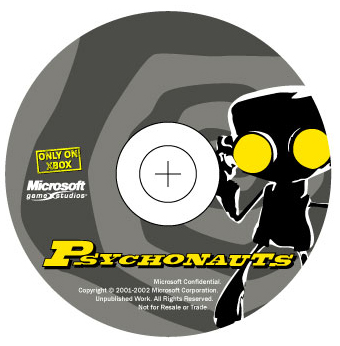
Lastly, I helped out with marketing materials so that the heavily burdened production team could stay focused on the important stuff. I even created a custom CD label for their E3 press kit, just because I cared ;^)
I’m including shots of Raz as well as Dart so you can see the changes. The image at top features Dart in the original “money shot”, a term I co-opted to mean visual prototype, for the project.
release date: 2005
MGS – Tork
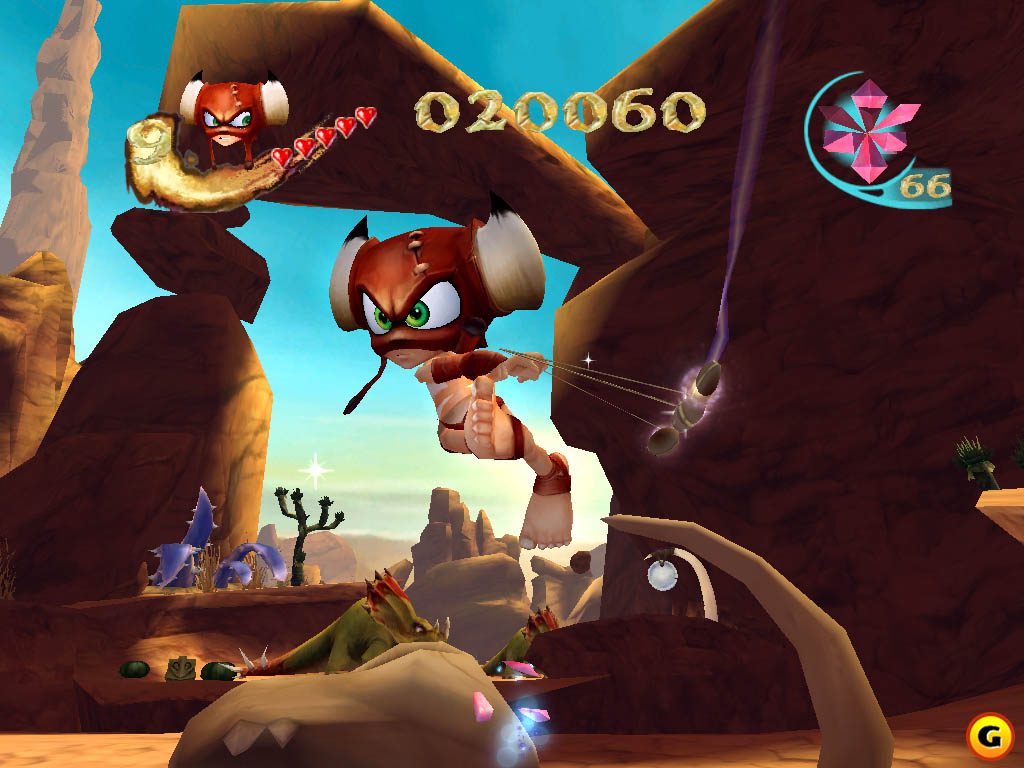
character platformers
on the verge of extinction…
The final publisher for this game was actually Ubisoft, but I worked for about 18 months on Tork, splitting my time between Psychonauts, Mythica, and miscellaneous Studio responsibilities. We signed this title at what turned out to be the beginning of the rapid decline in interest for character based platform adventures. And at the point where the financials no longer made sense for us, Microsoft allowed the developer (Tiwak) to pursue a new publisher. Regardless, I spent a good amount of time on this title and helped it get off the ground.
Aside from traveling back and forth to France my job was to keep production on track, help their art team focus on the right priorities, and assist the marketing team by creating screenshots and gameplay trailers.
release date: 2005
MGS – Nightcaster
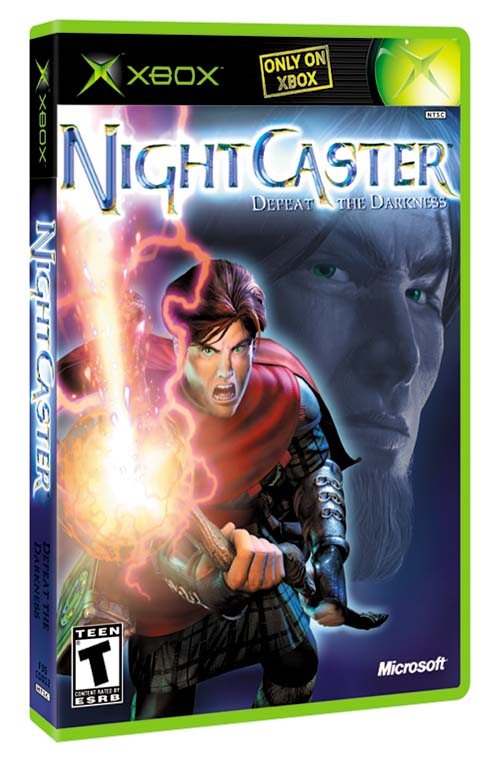
launch titles and new platforms…
NightCaster was an Xbox launch title developed by a studio in Denver, Colorado called VR1. As per the role of Publishing Art Director my job was to make sure they delivered quality artwork on time. Quality and timeliness have an inherent tension and because the launch window of the Xbox platform was an immovable target we had to pick our areas of focus very selectively.
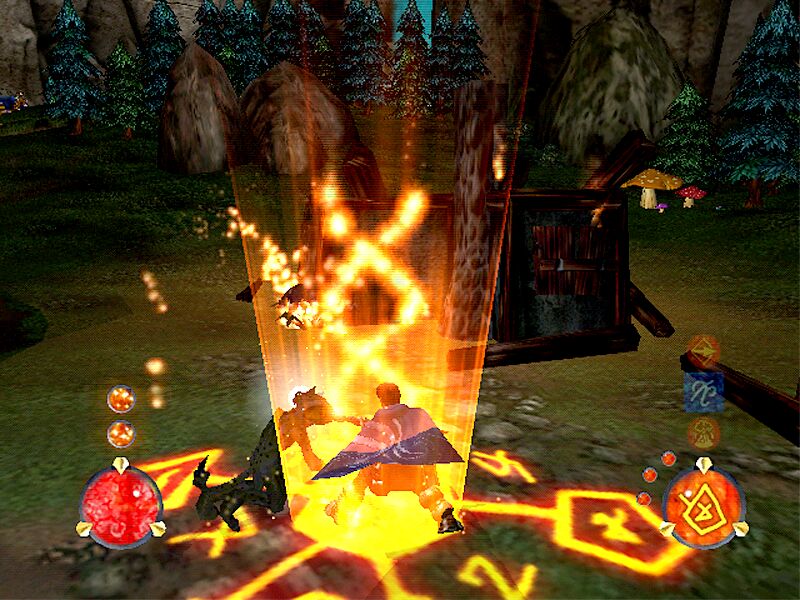
The pressure to exploit the “power of the Xbox” was intense and as a result I found myself scrutinizing every asset in the game. In terms of time, my principal contribution to this project was pushing for bold, dynamic spell effects. I think we achieved good results there. In terms of quality, my most important achievement was pushing for a more interesting & iconic hero character. Working closely with Steven Morrison (Art Lead) and Ray Lederer (Sr. Artist) I gave Arran a complete make-over from head to toe. (see before and after images to the left)
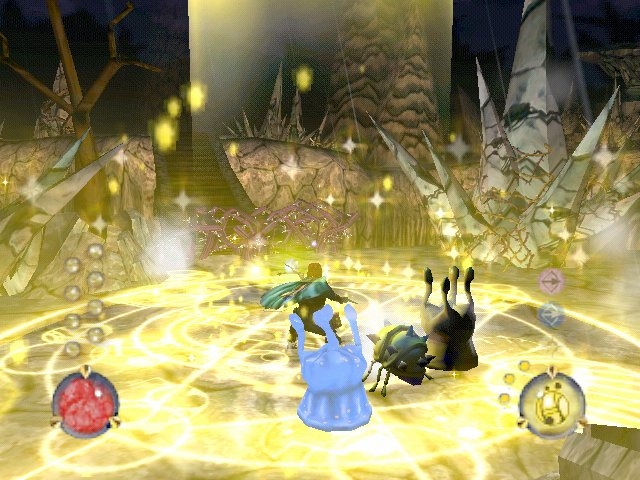
Release Date: Dec. 2001
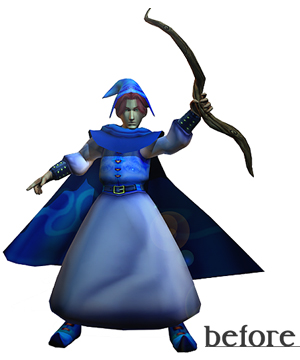
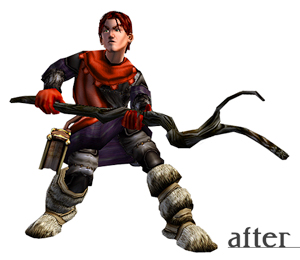
MGS – Dungeon Siege
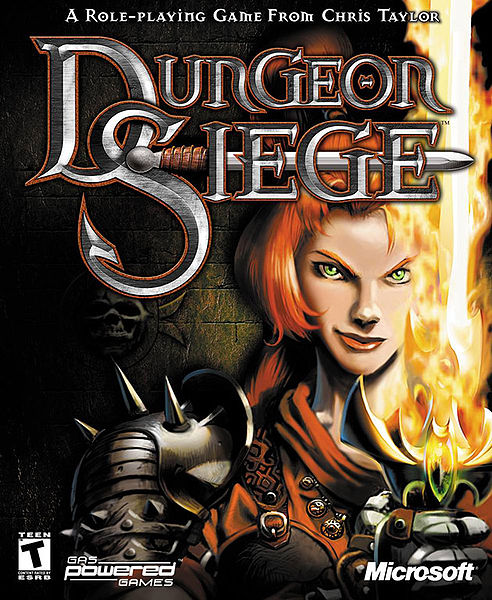
art direction on cruise control…
In isolation, the art direction tasks on Dungeon Siege were fairly light but given the number of tasks to juggle there was always plenty to do. In publishing you are typically covering multiple projects at the same time and I was reviewing artwork every day for Dungeon Siege, Asheron’s Call 2, Nightcaster, Psychonauts, Symphony of Light, the Raven and Rex project, and performing due diligence visits to multiple studios around the world. As our studio’s portfolio grew I eventually got to hire two assistant Art Directors, but I digress.

My main contribution to Dugeon Siege involved reviewing assets against the schedule to verify they were making progress while keeping the quality bar high. But I also provided specific critiques of the main characters (Farm Boy and Farm Girl) to Chris Taylor, reviewed marketing assets with MS marketing on a quarterly basis, gathered screenshots for ad construction on demand, brainstormed with their UI artist (John Gronquist) to bring more “life” to the interface, worked on their game map, and built an entire font based on the original Dungeon Siege logo-type. I even went so far as to create a .TTF for the display face.
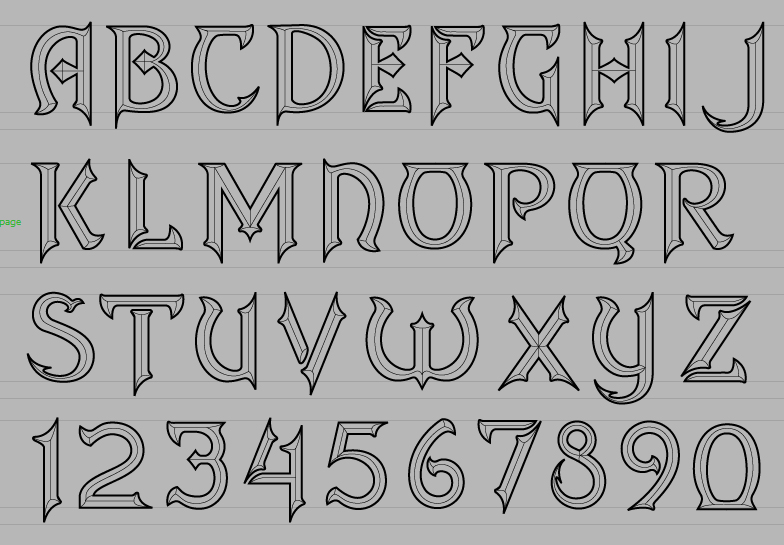
release date: 2002
Games for Kids
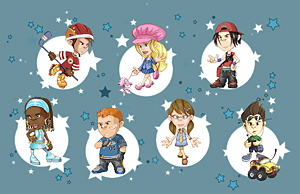
Incubating Greatness…
I spent about a year as the Creative Director on a small team positioned inside of Microsoft’s incubation group. Our charter was to seed some creative games, targeted at kids, that took advantage of the Windows operating system and the features unique to personal computers (i.e. hard drive + ubiquitous mouse and keyboard). I was in charge of art, sound, and game design on the two titles started. I was also responsible for pitching new IP for development…it was exciting and rewarding but ultimately the projects ran out of steam as it is simply very difficult to make a compelling business case for kids PC games.
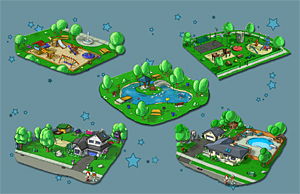
Notes:
Novo in conjunction with Amaze Entertainment
Kooligans, codename Spanky, with Breakaway Games
outline my role as creative director
-coaching visuals to ensure cohesion and consistency
-reviewing gameplay systems to make sure games are easy to grasp and fun to play
Cavedog
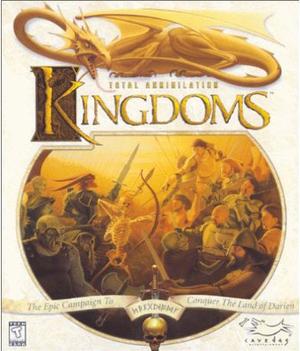
the constant state of change
Lured by the charisma of Scott Wallin and Ron Gilbert (creator of Maniac Mansion, Monkey Island and S.C.U.M), I left a fortune in Microsoft stock options to join the company that just released Total Annihilation. The game was a critical success, the studio was growing, and the opportunity looked to be fantastic.
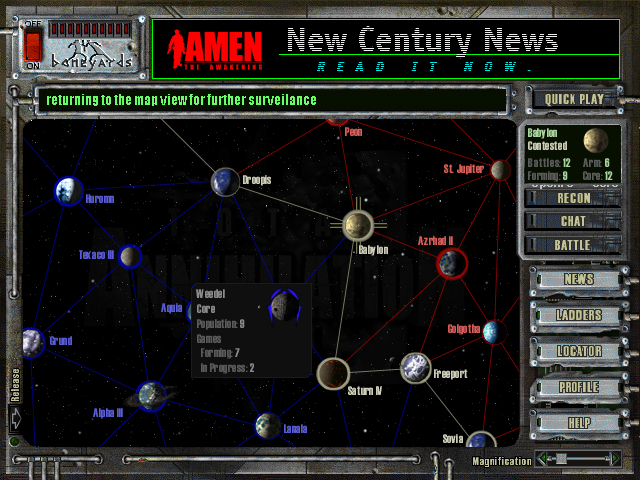
Only hours after setting up office I found myself immersed deeply in conversations with Ron about where to take Total Annihilation and future Cavedog games on-line. I was so excited! I slid right in to a project called Boneyards and helped construct an interface around the Galactic War expansion for Total Annihilation. With the help of rookie artist/designer Brad Rebh we were able to design the entire interface in a couple weeks. I built this Macromedia Director prototype in about a week. (note: the file is an executable for windows only. We were not allowed to use rollovers so navigation may seem very quaint by today’s standards.)
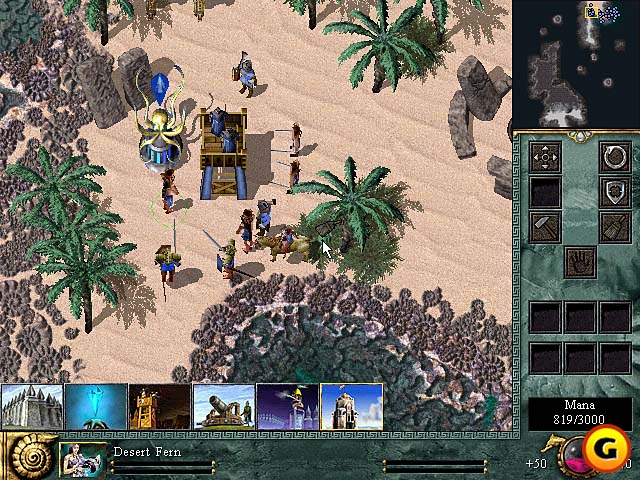
The next project was TA: Kingdoms. I took a leadership role in designing the Darien Crusades, the persistent metagame for Kingdoms. I sketched out high-level objectives as well as interface design and worked closely with programmer David Satnik to refine the mechanics into an algorithm for determining contested spaces and escalating victory conditions. The idea was to move from the Galactic War’s point-node map to more of a Risk-like map and it was a challenge. As the interface needs for Boneyards were substantial I found myself taking on more and more of the main game interface to ensure consistency. I ended up making a lot of gold buttons for that game.
I also spearheaded the effort to re-balance the game for multiplayer. It was immediately clear that the single player balance, which worked very well for mission-based play, was easily exploited in multiplayer contests. With the help of two online-focused designers (JC Connors and Brandon Franklin) I worked through significant challenges to provide an even playing field for the four different sides. This effort carried through to the quickly released Iron Plague expansion for Kingdoms.
I worked on many other projects while at Cavedog. Some highlights: I wrote the gameplay pitch document for a Harry Potter game, assembled a production team to build the Humongous Family Entertainment Network, managed the sysop team for Boneyards and the Backyard Sports Network, designed the Boneyards website and gave the Cavedog website a face lift, I helped build some little flash applications for the Amen: the Awakening web site, and, lastly, I hold the dubious distinction of creating the last downloadable unit for Total Annihilation. Oh yea! Pretty sweet, huh?

E3 2007 interview with Corey Dangel. 9 minutes.
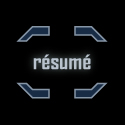
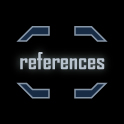
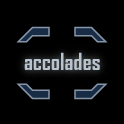

 Corey Dangel has been an Art Director for 15 years. He spent the last four years establishing the visual direction for The Agency, a critically anticipated title for PC and PS3. Prior to SOE, Corey spent nearly a dozen years living the life of an elite art director in the games division of Microsoft. Focused principally on online games, Corey spent his first tour of duty working on several groundbreaking titles including the Internet Gaming Zone, Fighter Ace, and Asherons Call. A two-year hiatus sent Corey to Cavedog/Humongous Entertainment where he helped bring the Total Annihilation franchise to the online world. A return to Microsoft had him working on a variety of PC and Xbox games, most notably Dungeon Siege, Psychonauts, and Mythica. Corey attended Western Washington University, where he graduated with a Bachelor of Science in Visual Communication. Outside of work, Corey pretends to be a rock star in his circularly referential band, AgentC. He makes a fine martini, too.
Corey Dangel has been an Art Director for 15 years. He spent the last four years establishing the visual direction for The Agency, a critically anticipated title for PC and PS3. Prior to SOE, Corey spent nearly a dozen years living the life of an elite art director in the games division of Microsoft. Focused principally on online games, Corey spent his first tour of duty working on several groundbreaking titles including the Internet Gaming Zone, Fighter Ace, and Asherons Call. A two-year hiatus sent Corey to Cavedog/Humongous Entertainment where he helped bring the Total Annihilation franchise to the online world. A return to Microsoft had him working on a variety of PC and Xbox games, most notably Dungeon Siege, Psychonauts, and Mythica. Corey attended Western Washington University, where he graduated with a Bachelor of Science in Visual Communication. Outside of work, Corey pretends to be a rock star in his circularly referential band, AgentC. He makes a fine martini, too.

